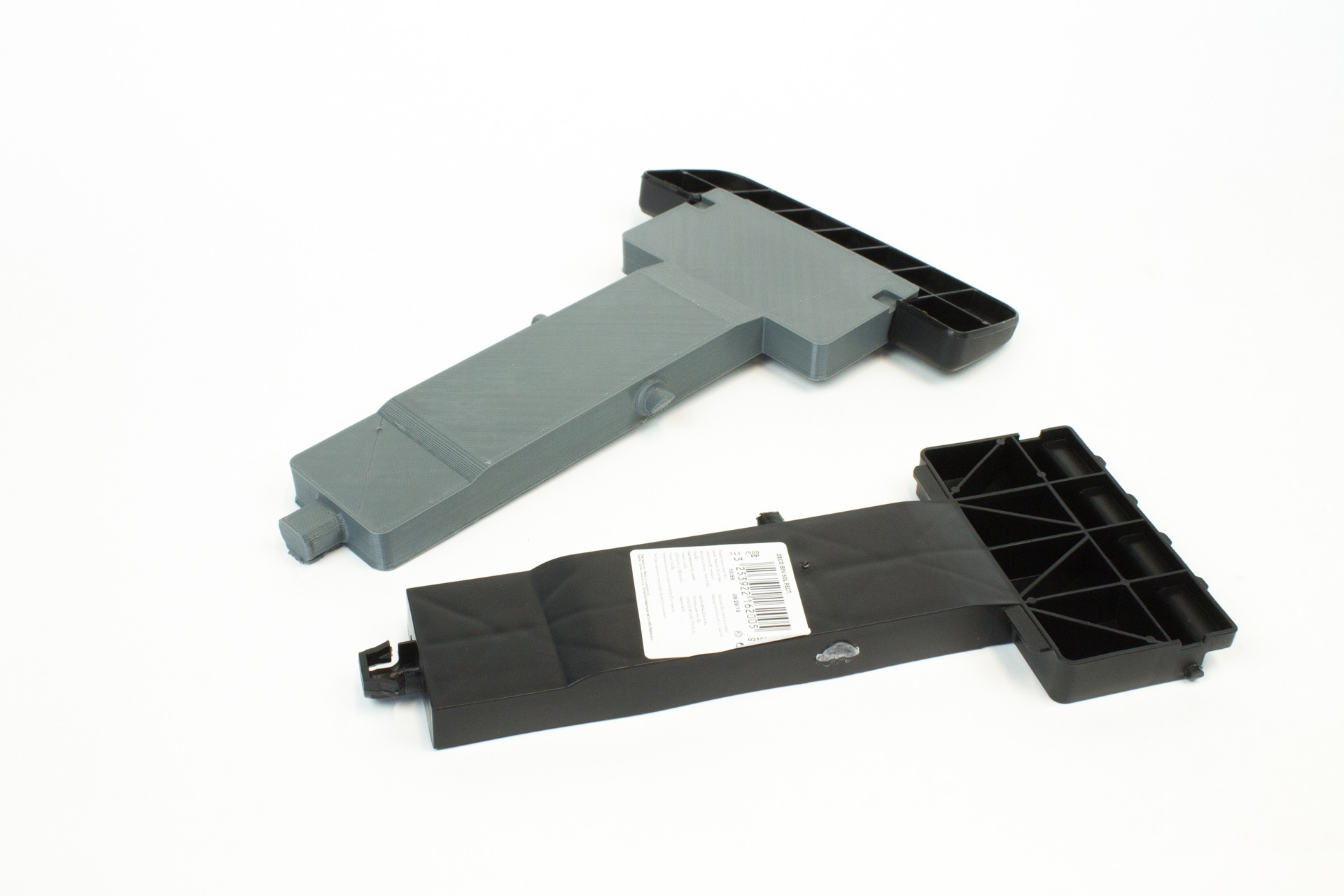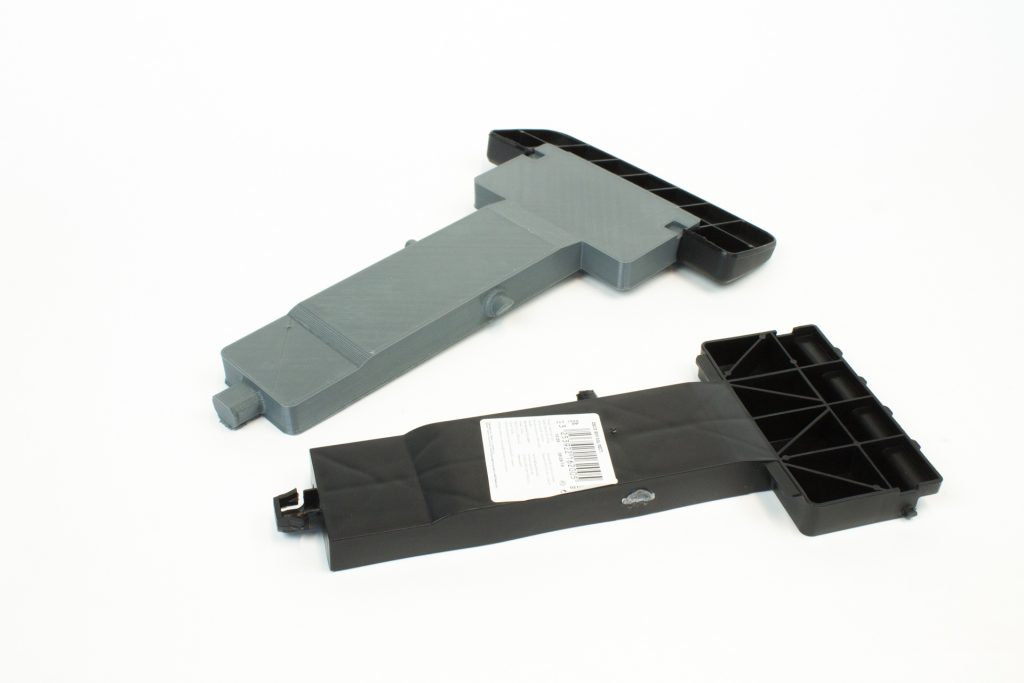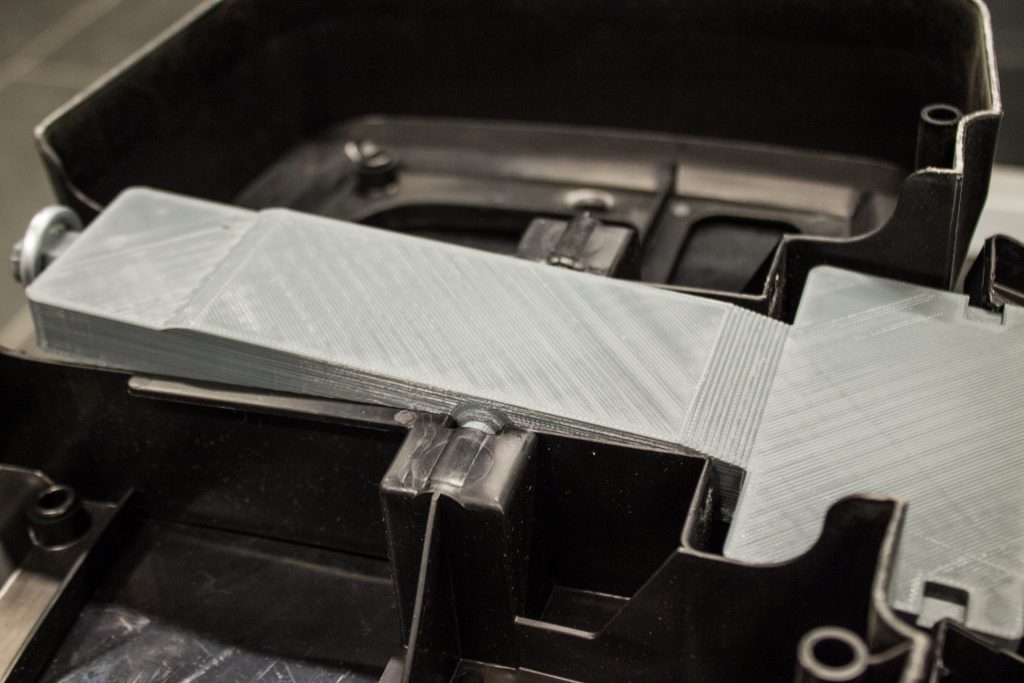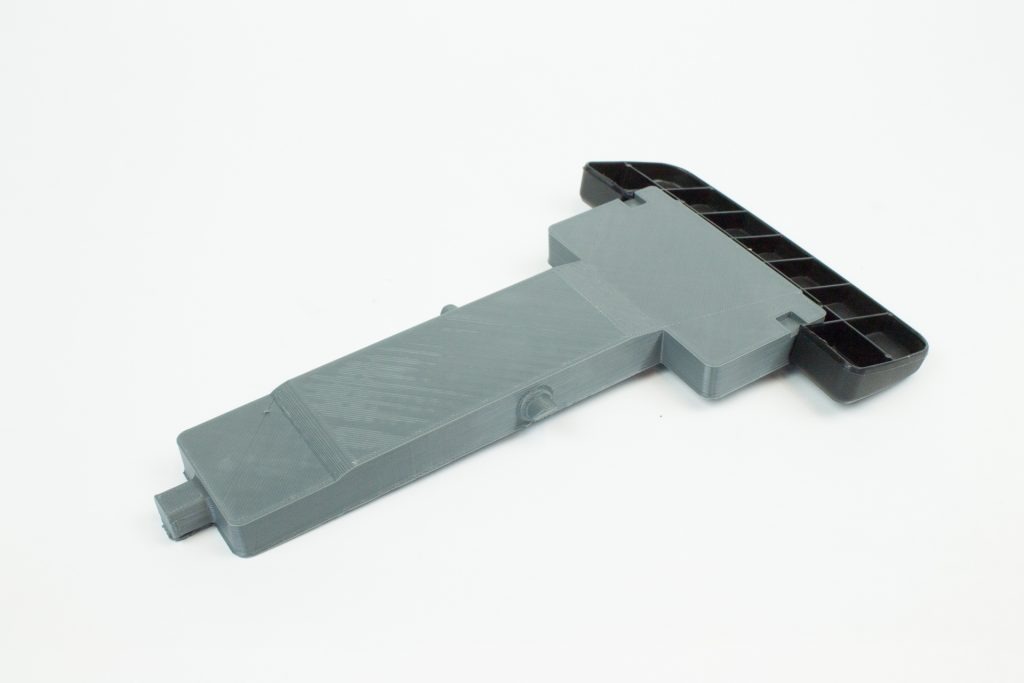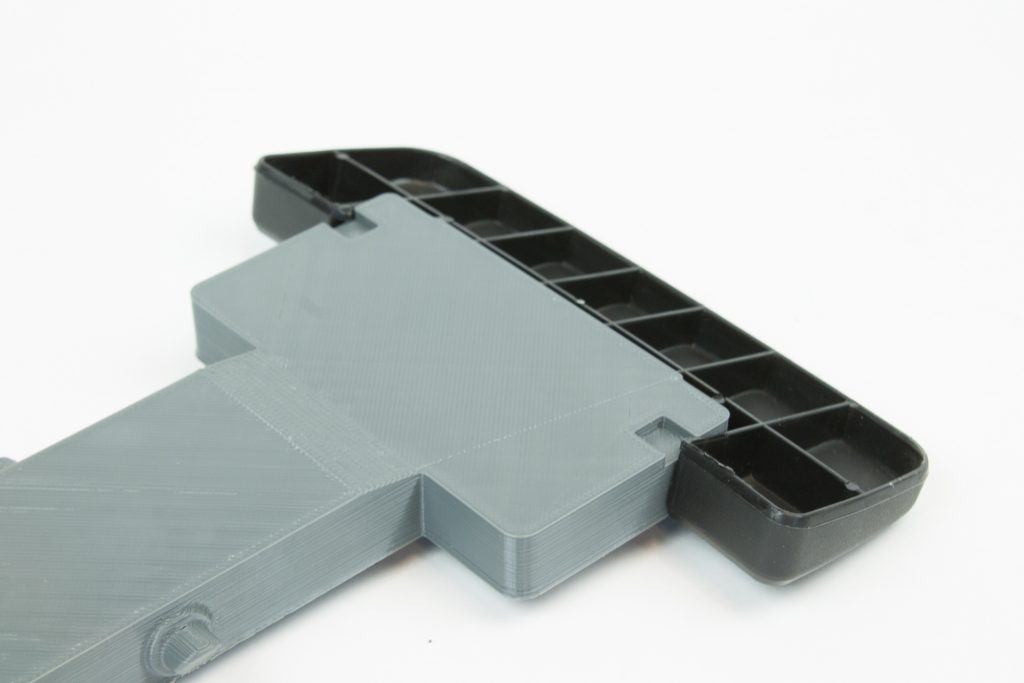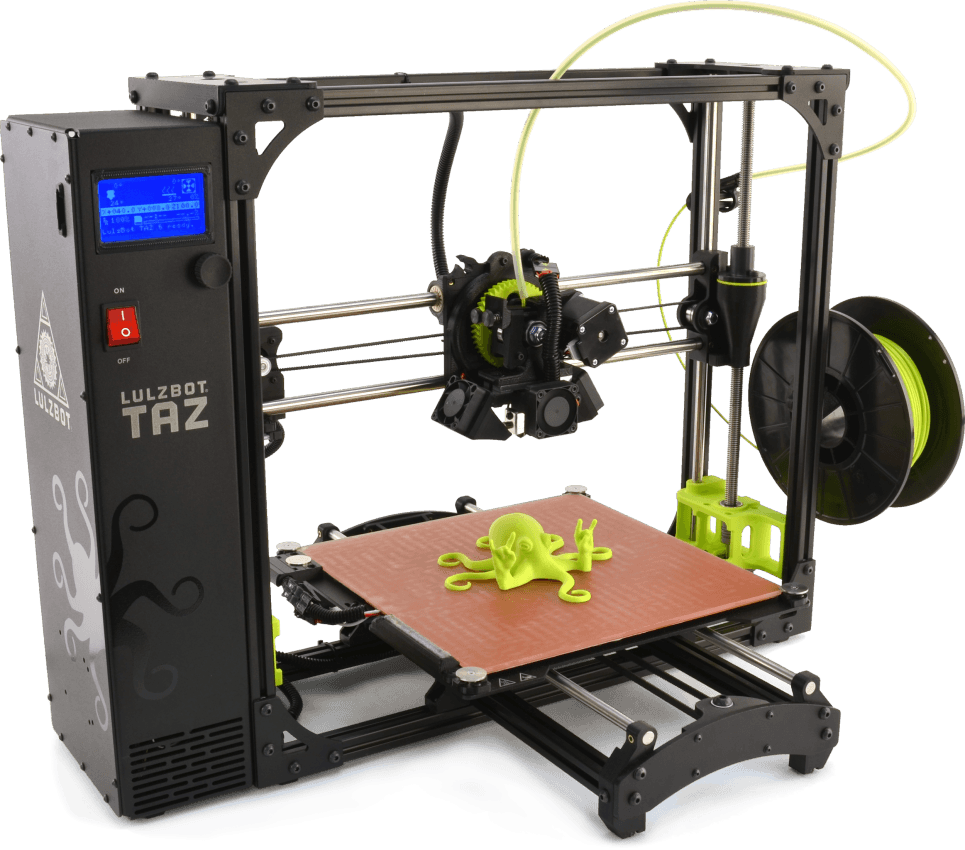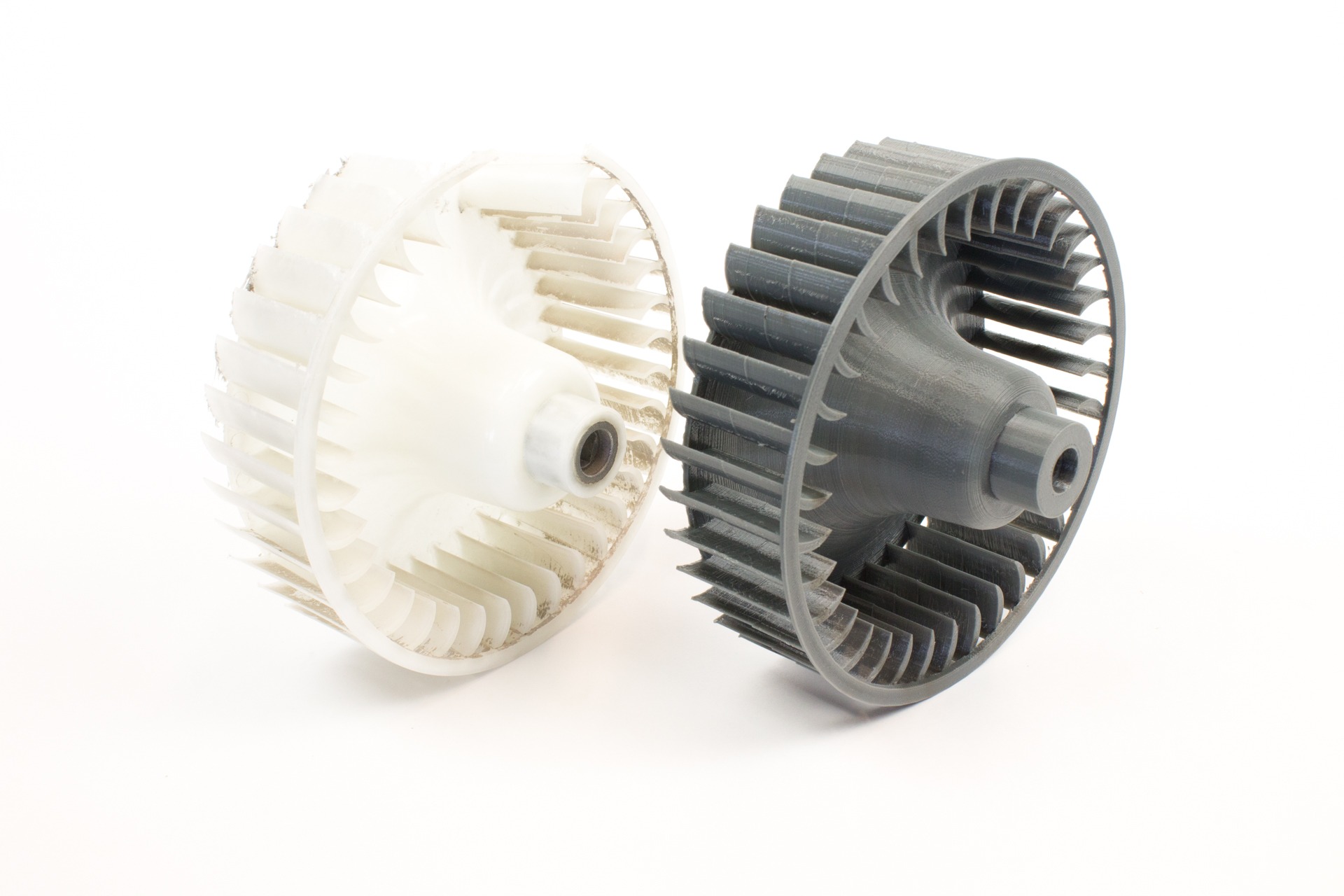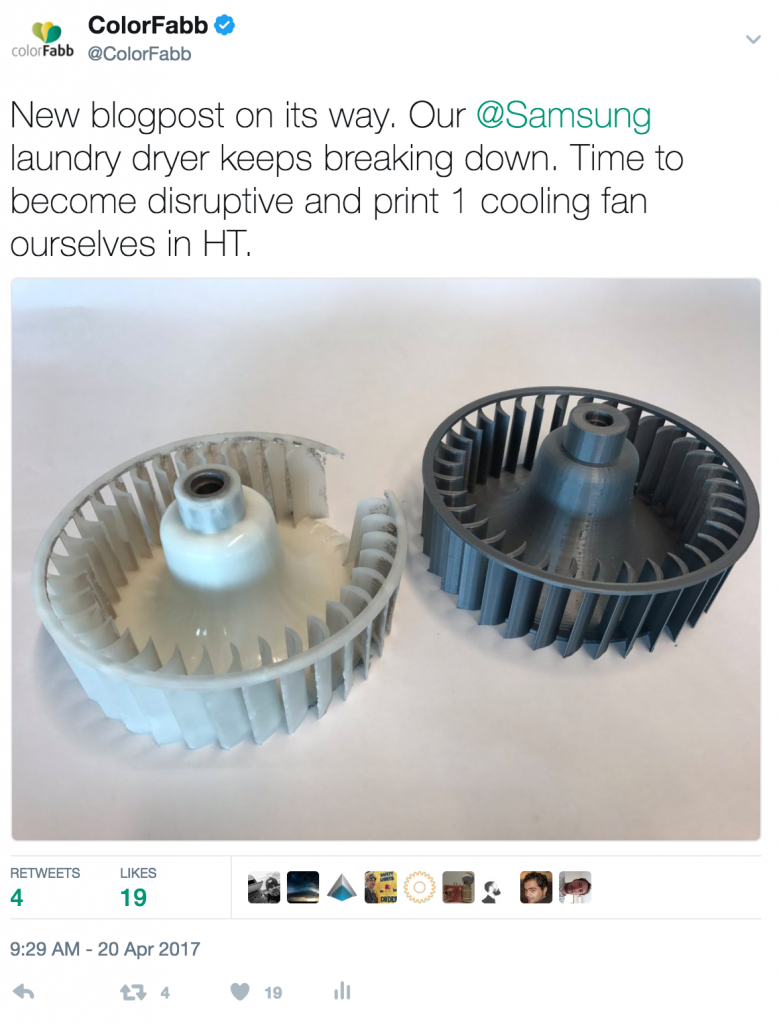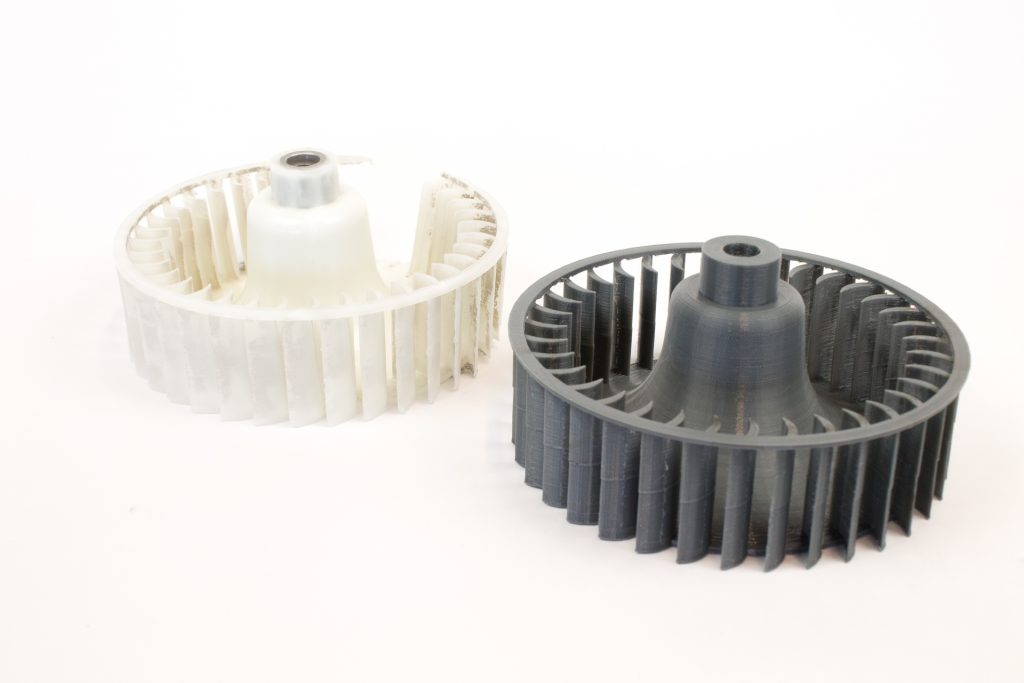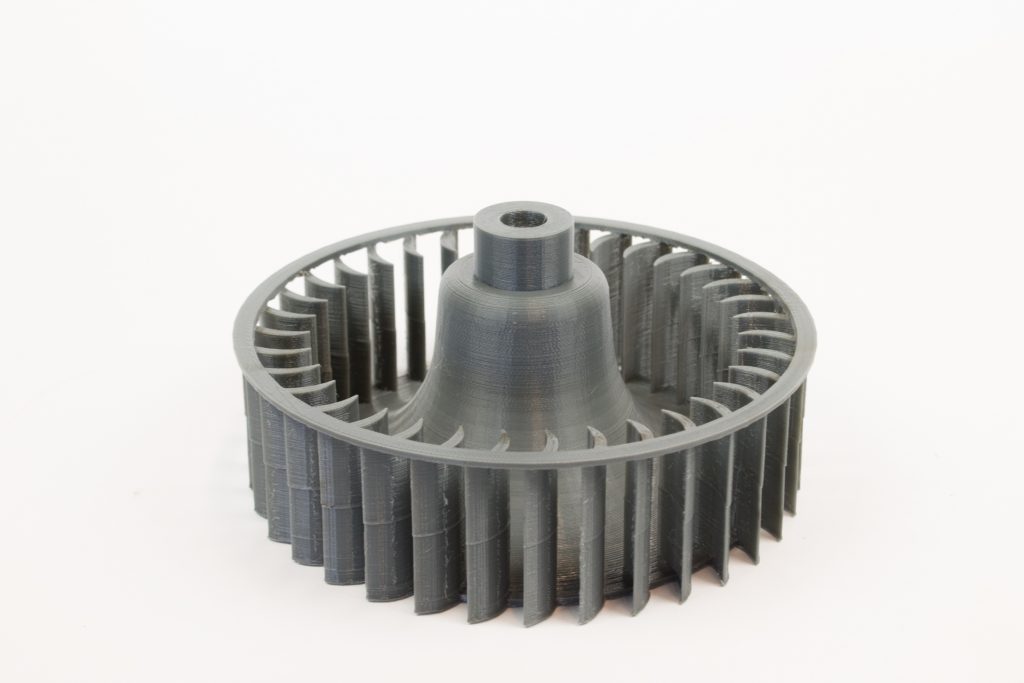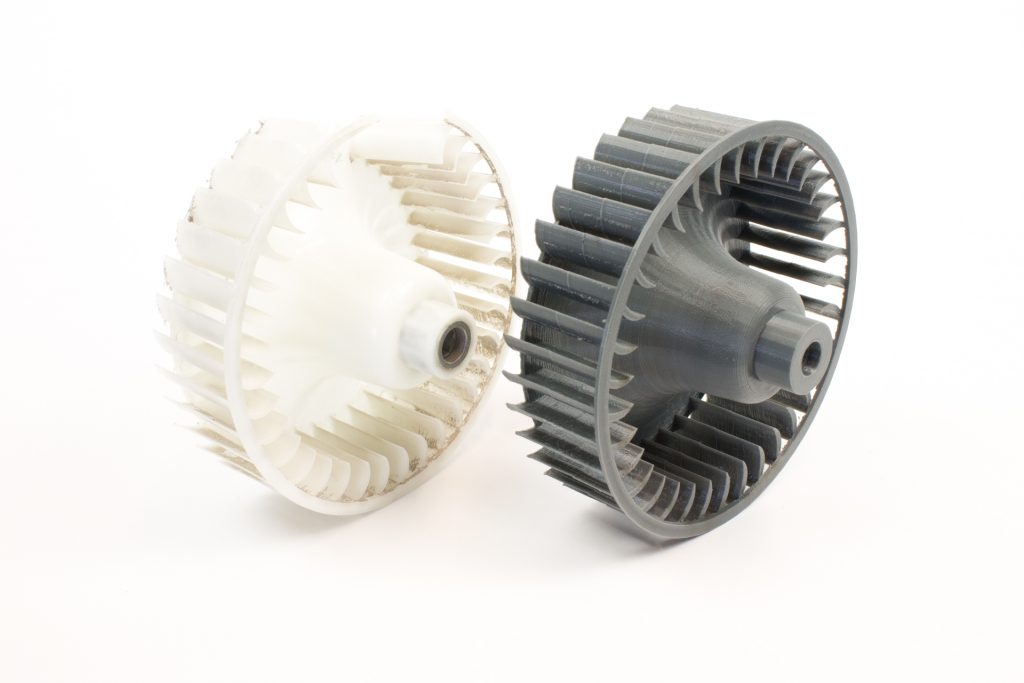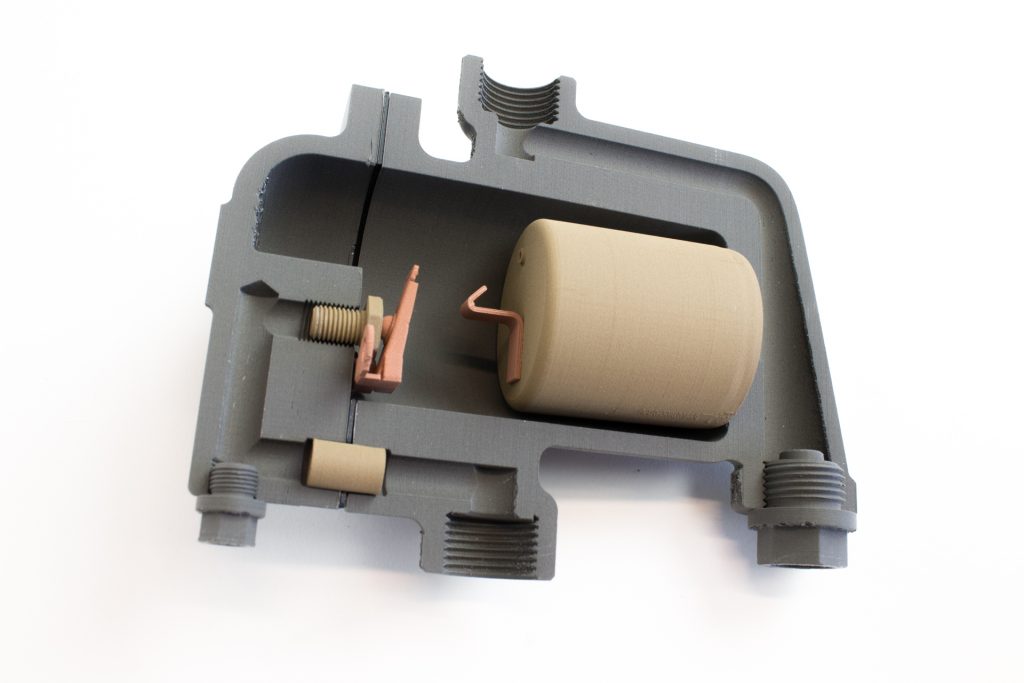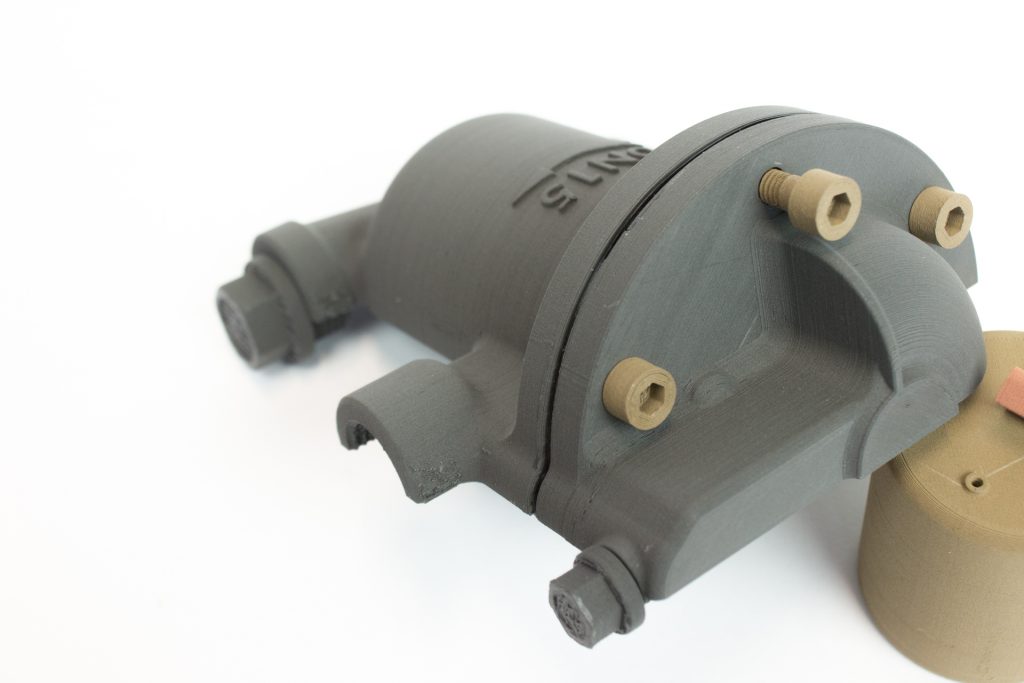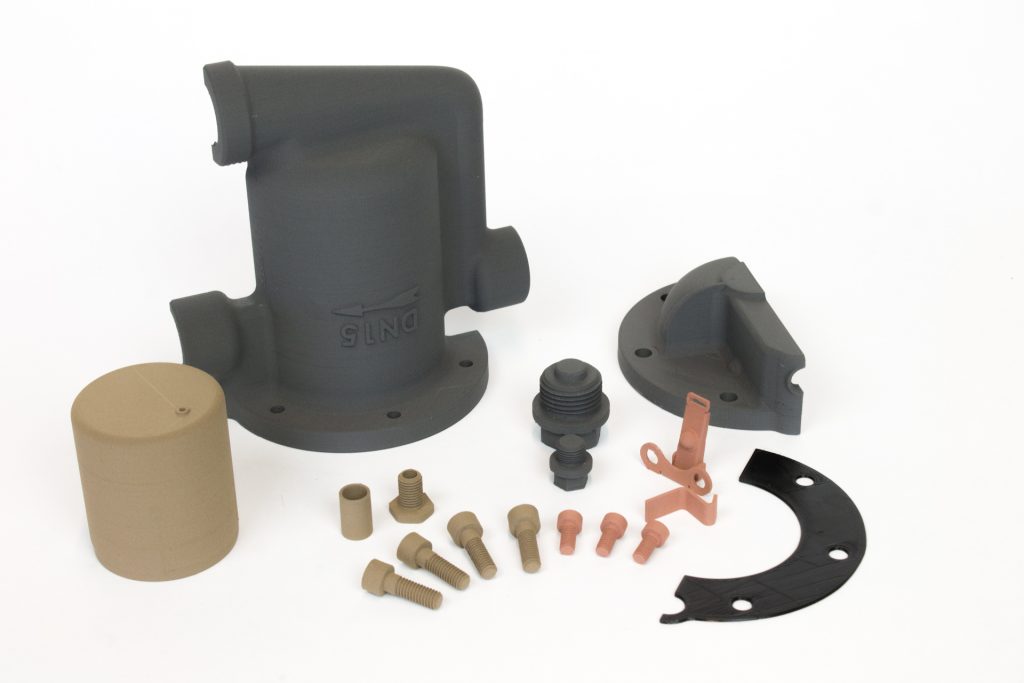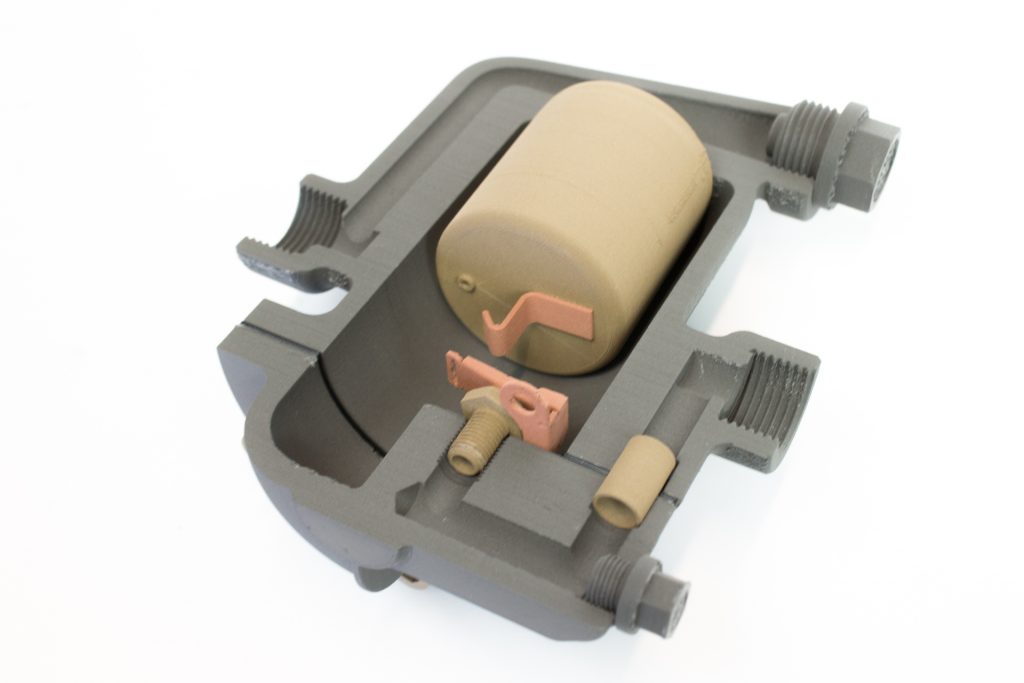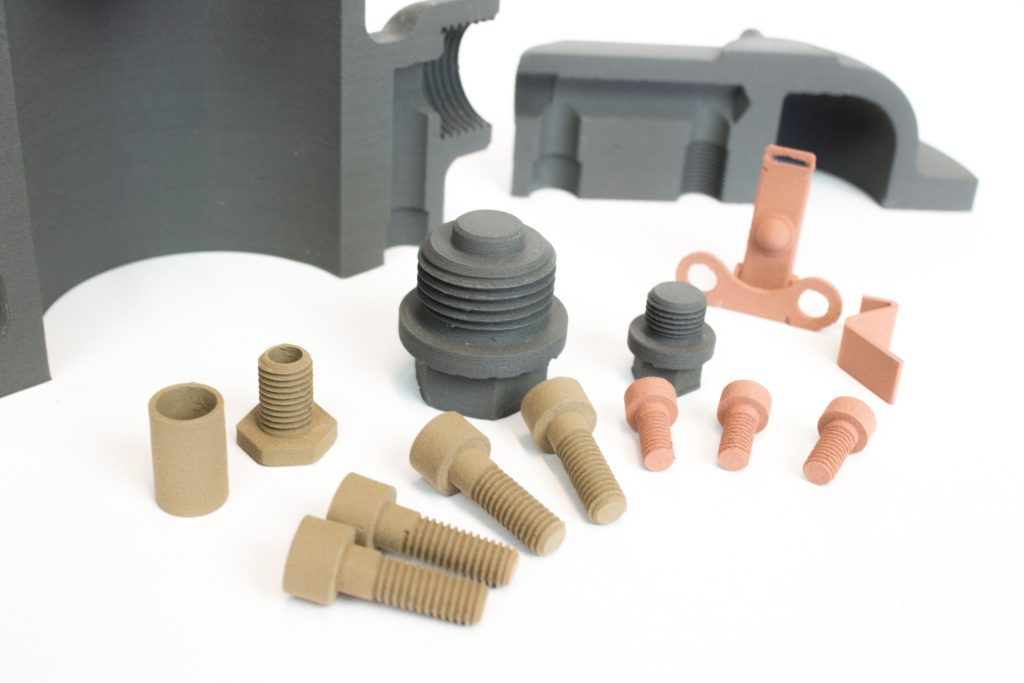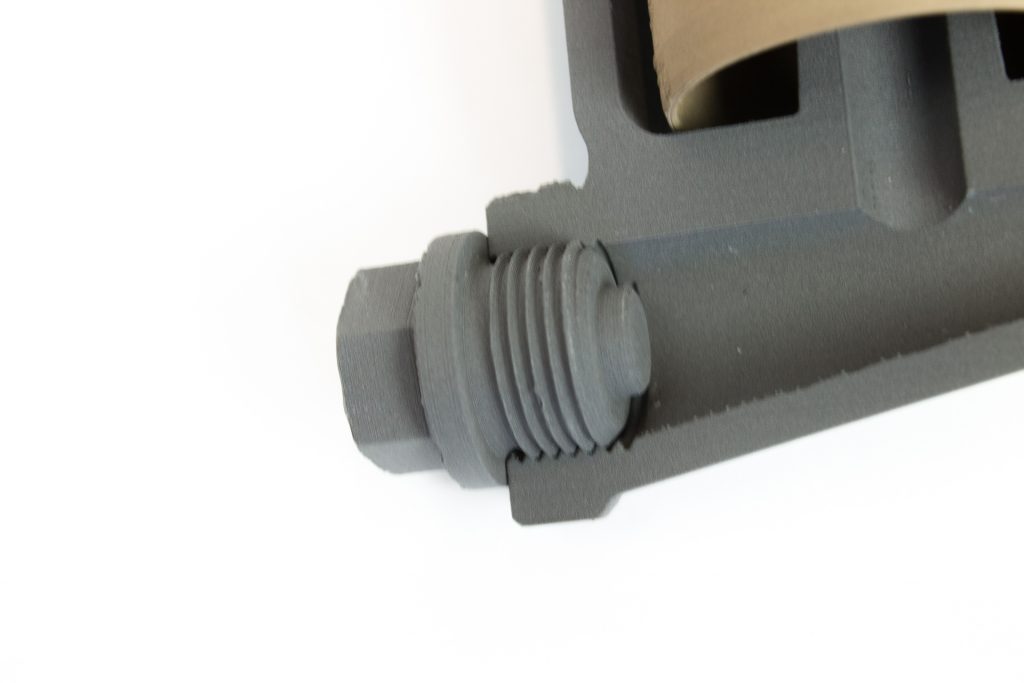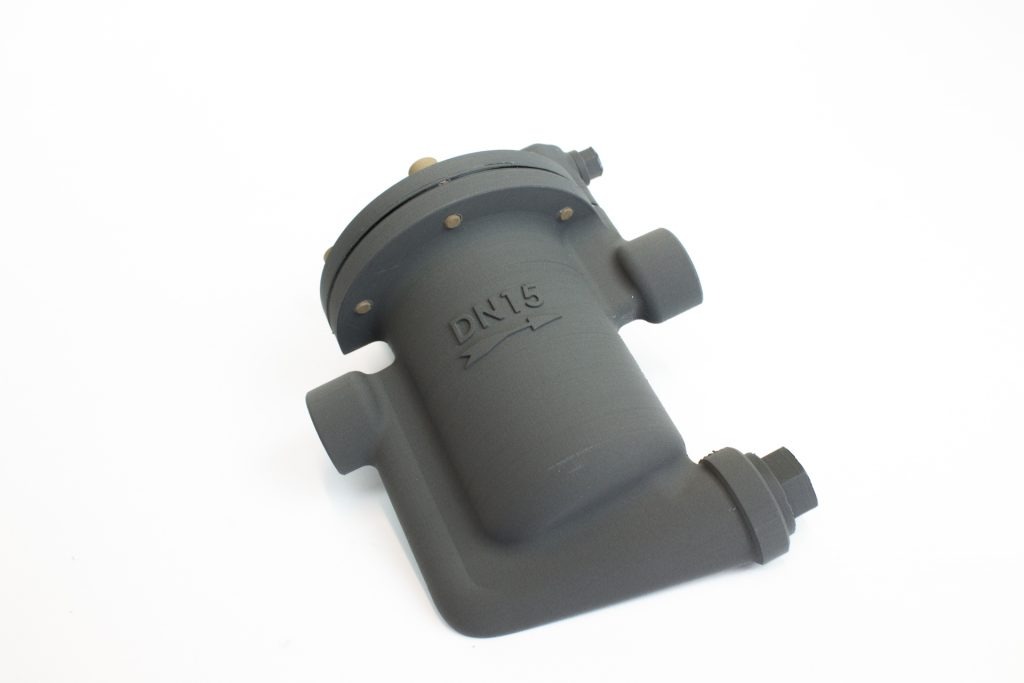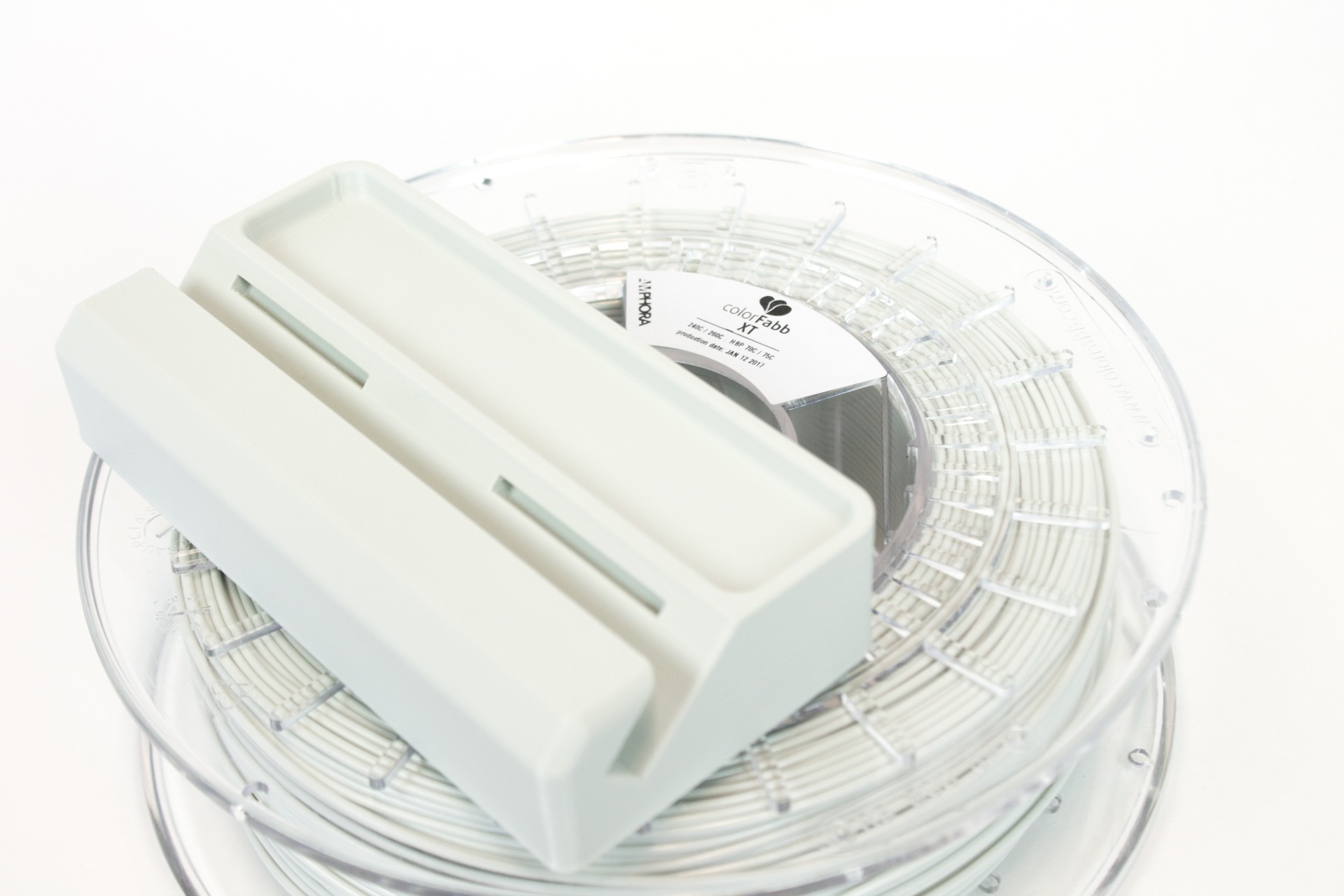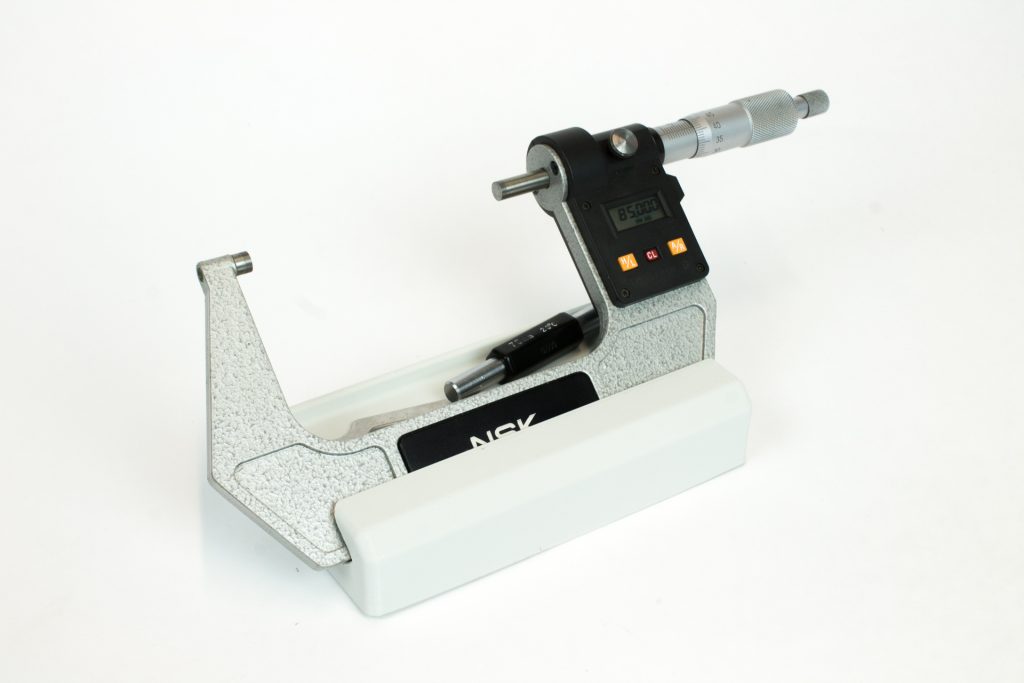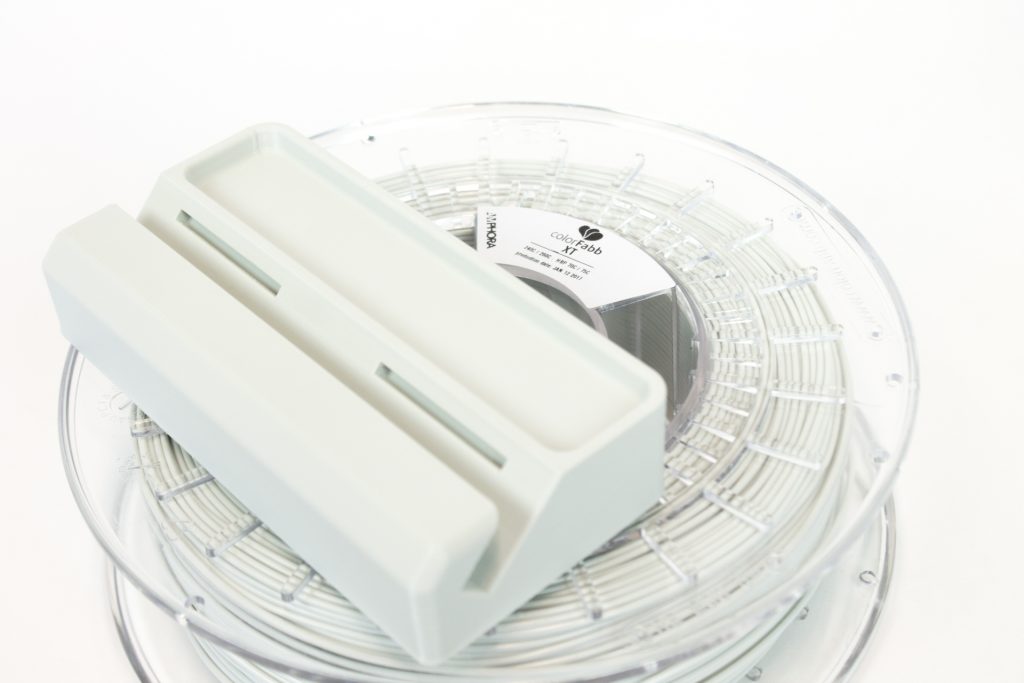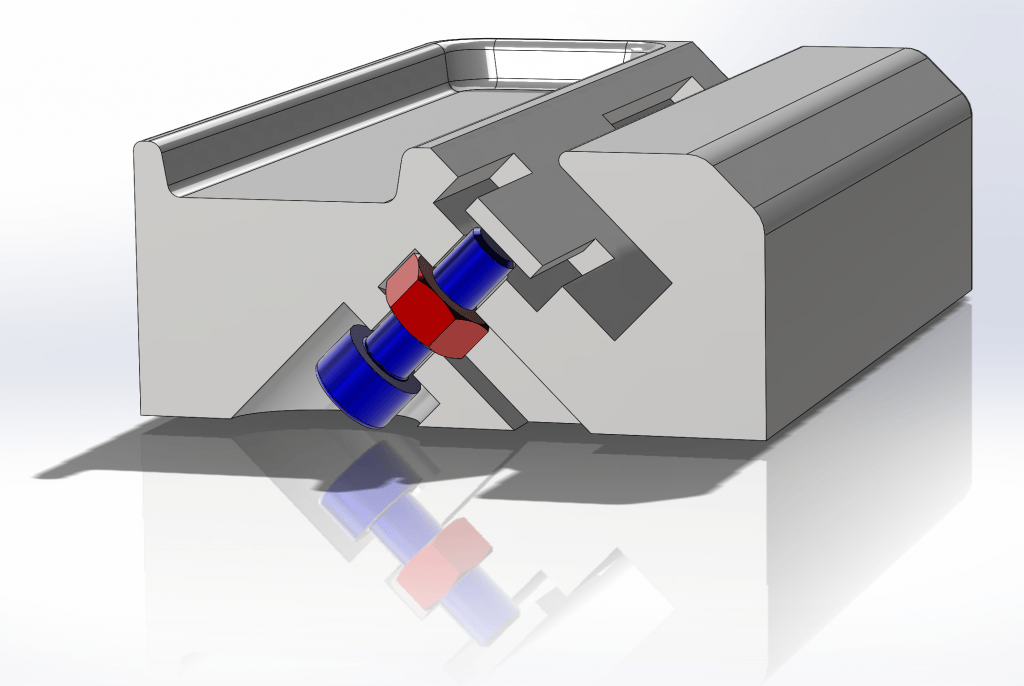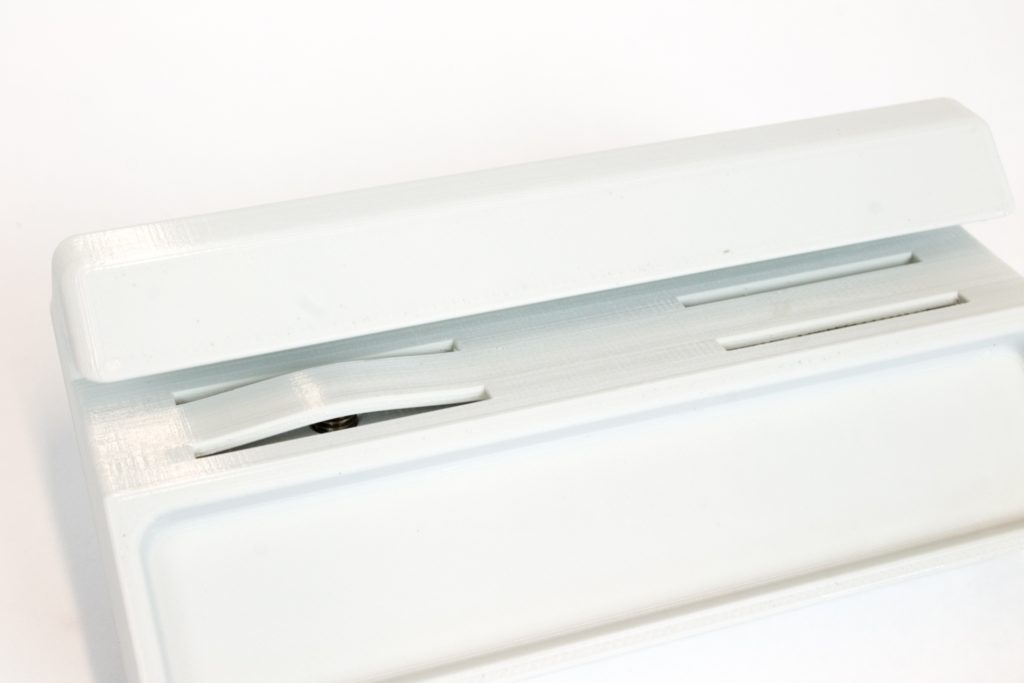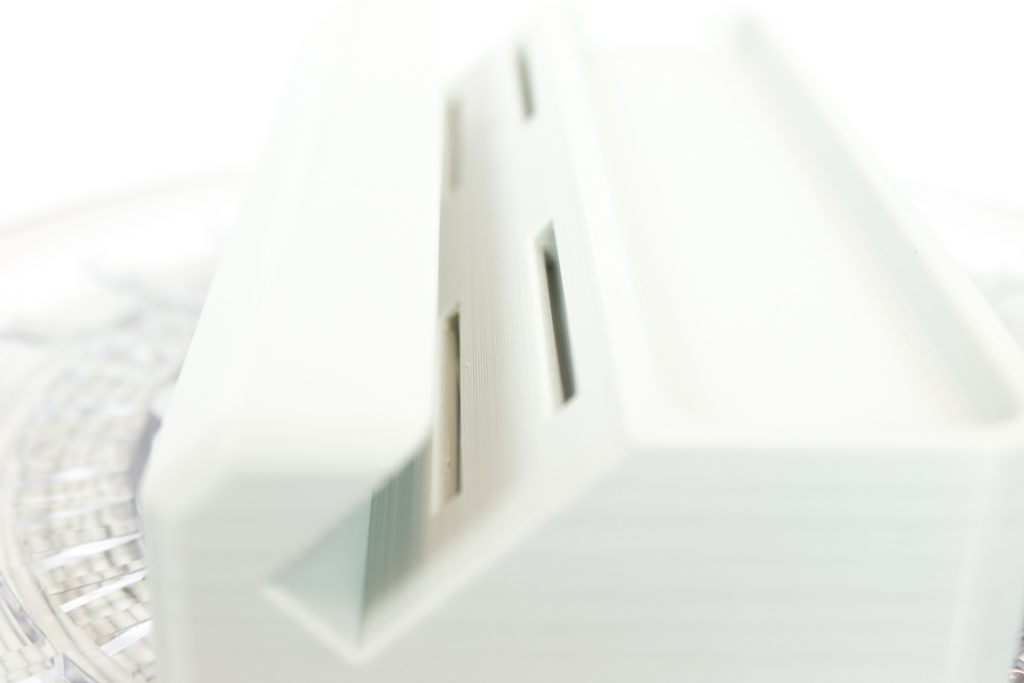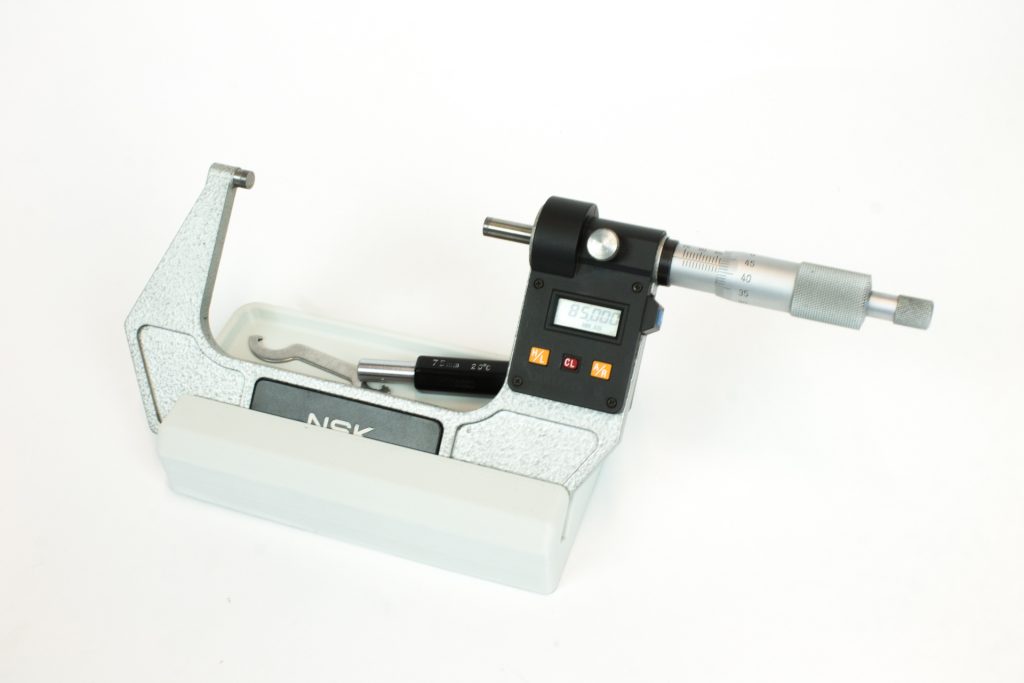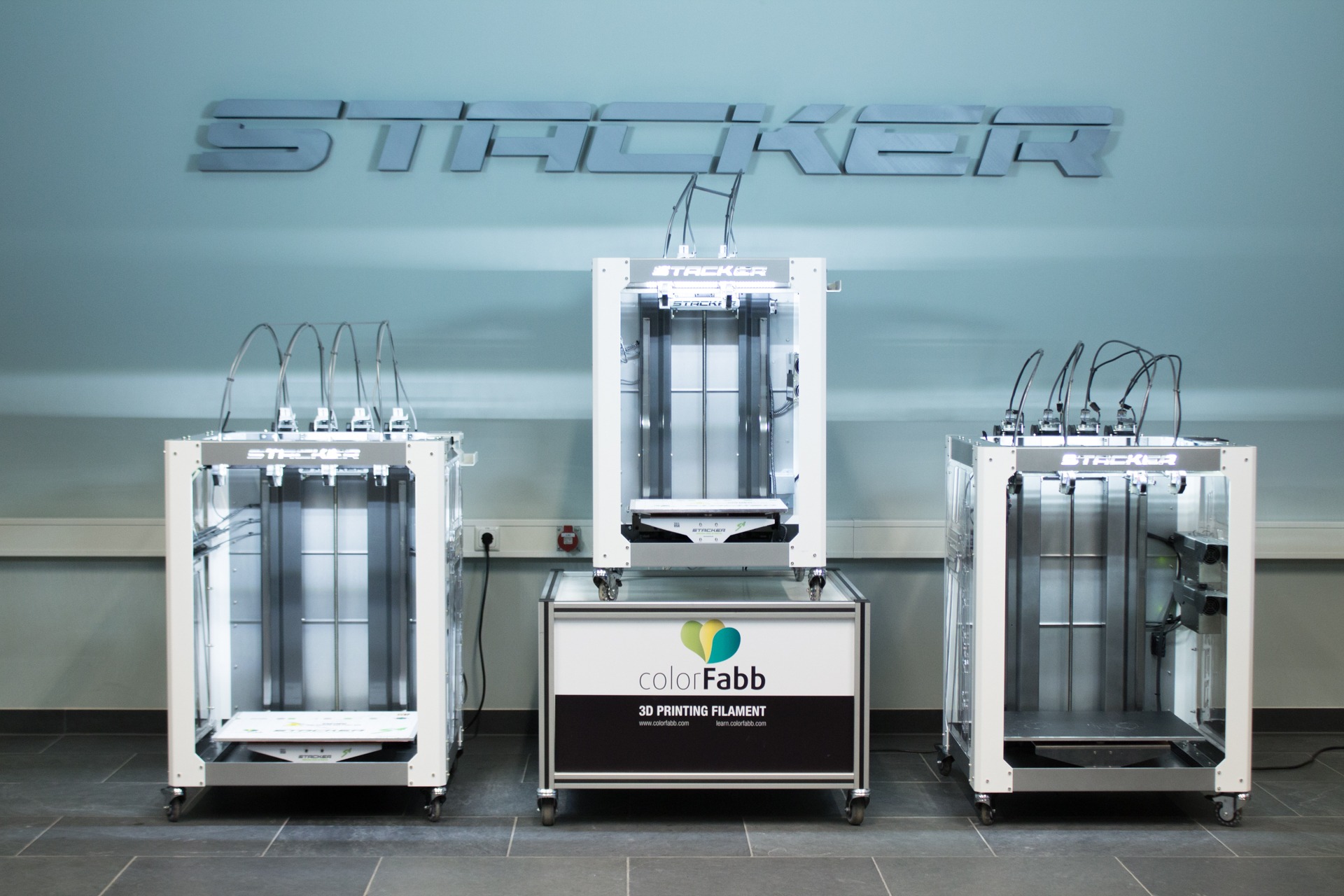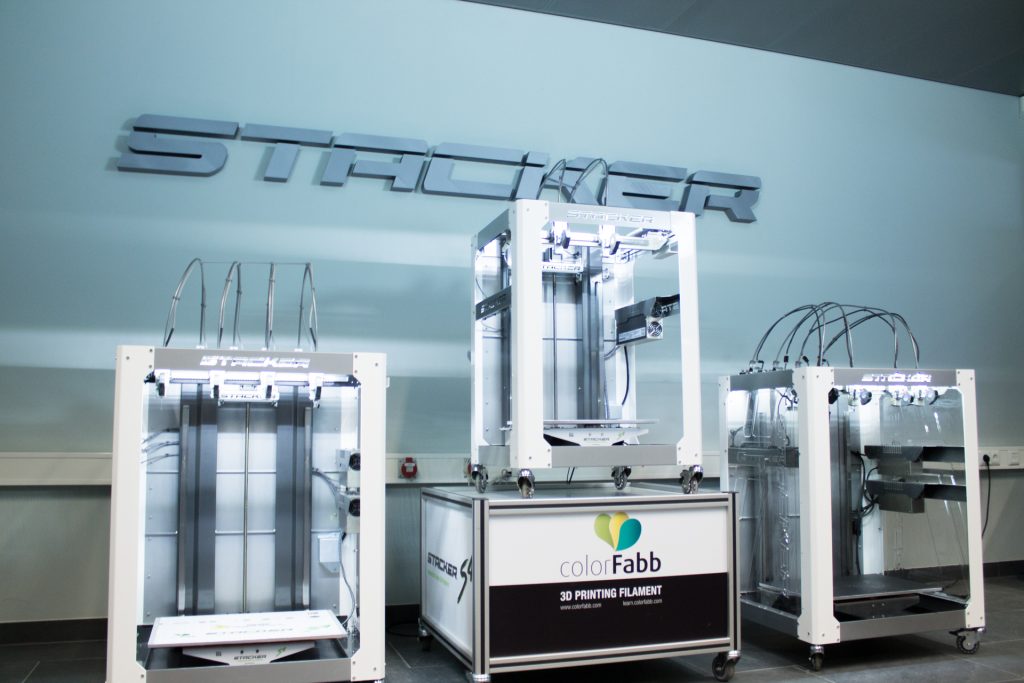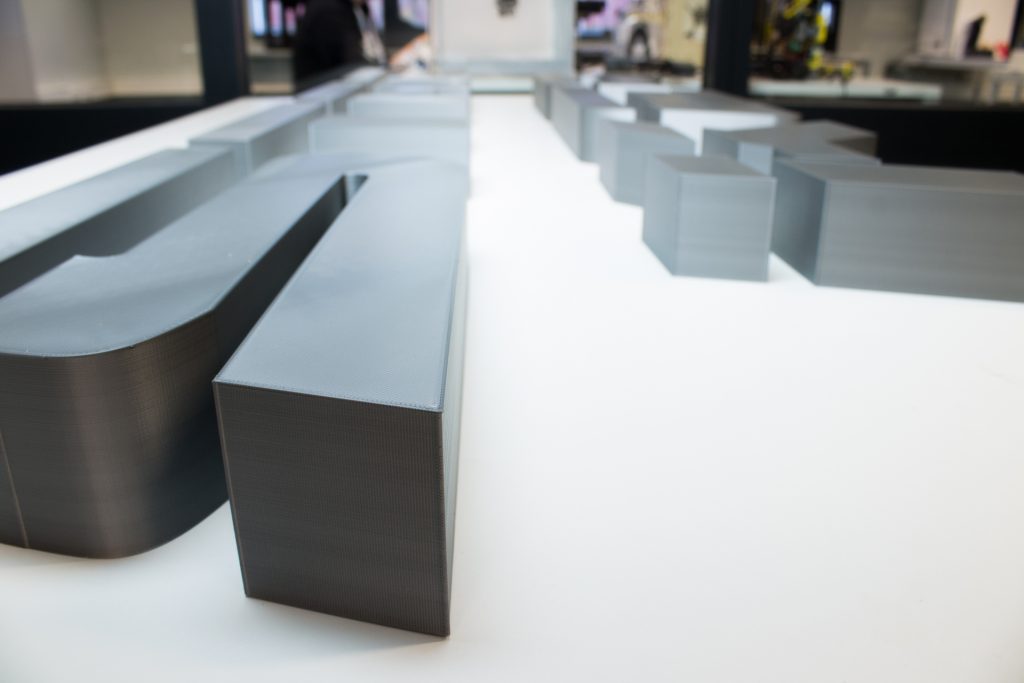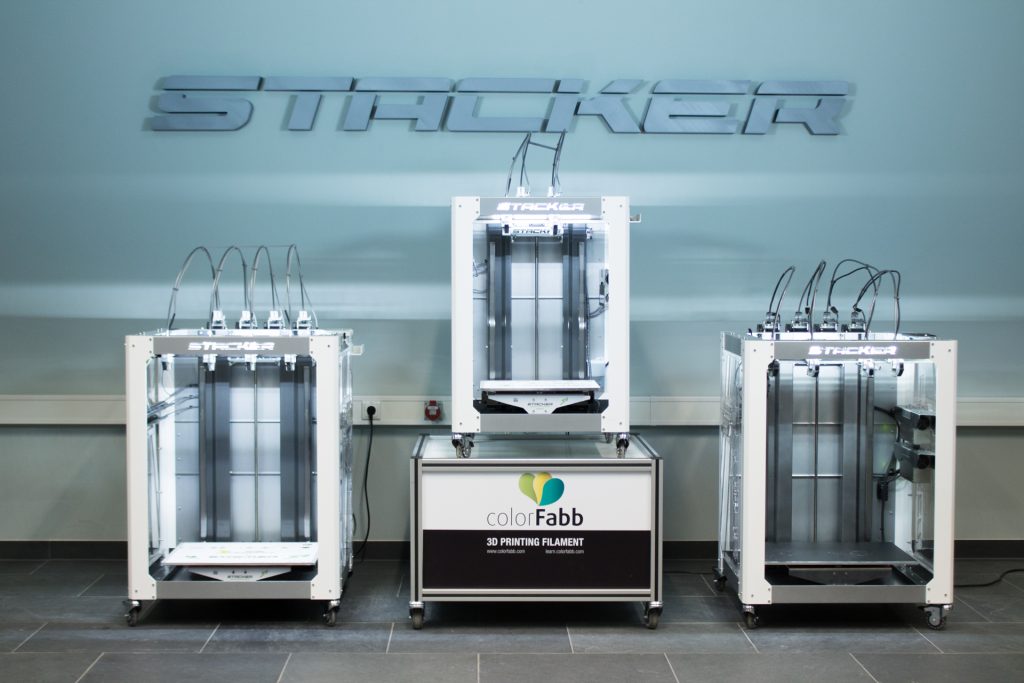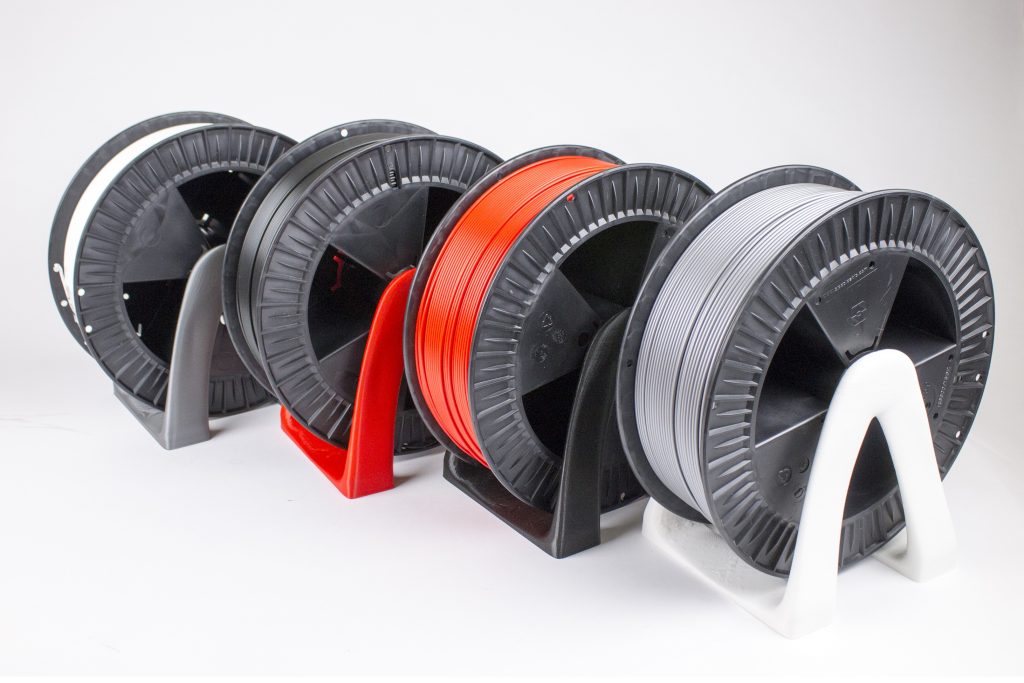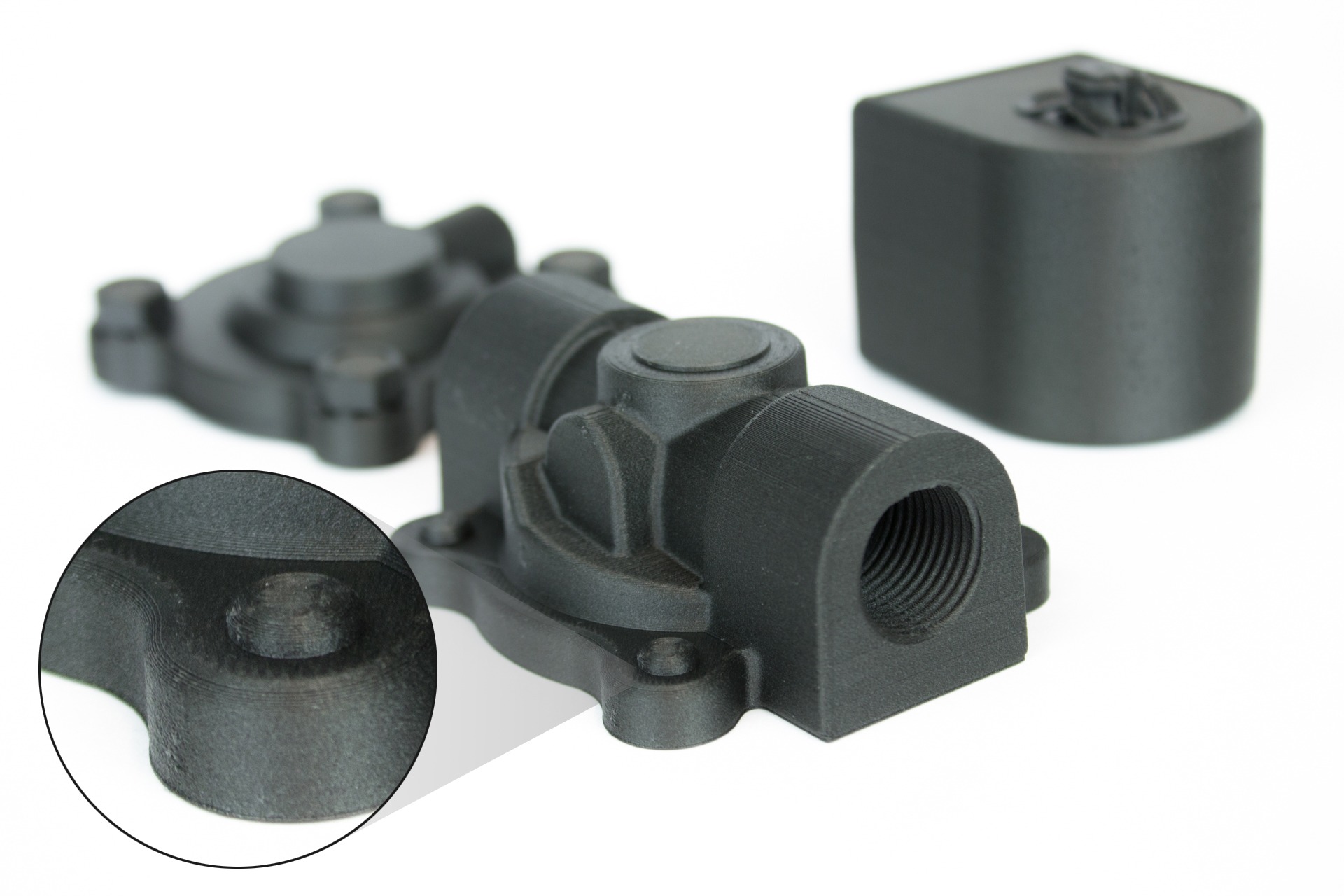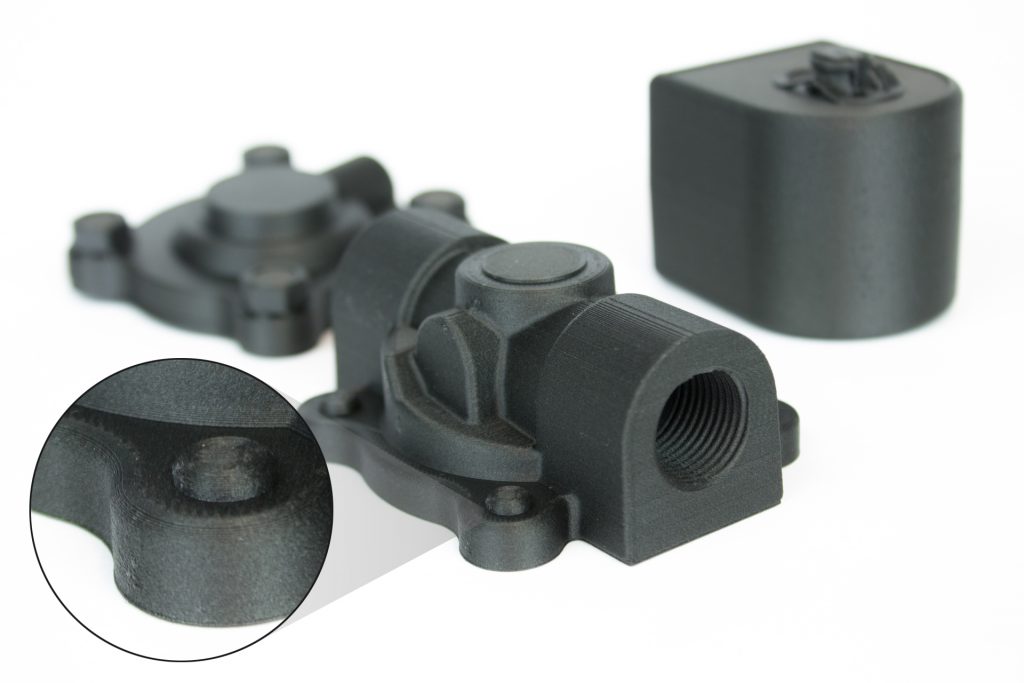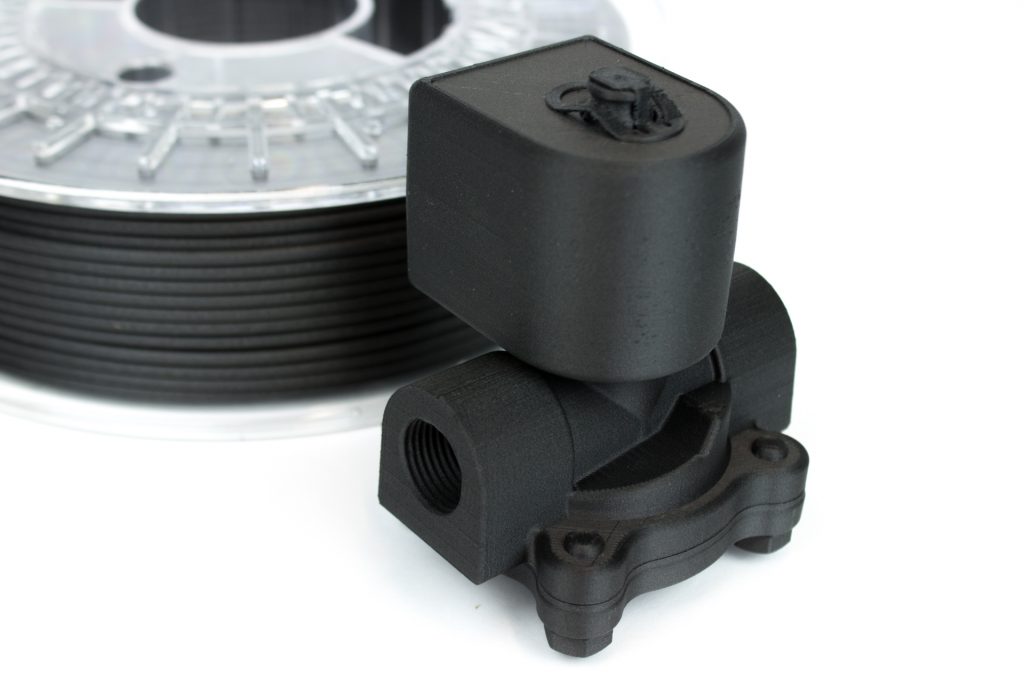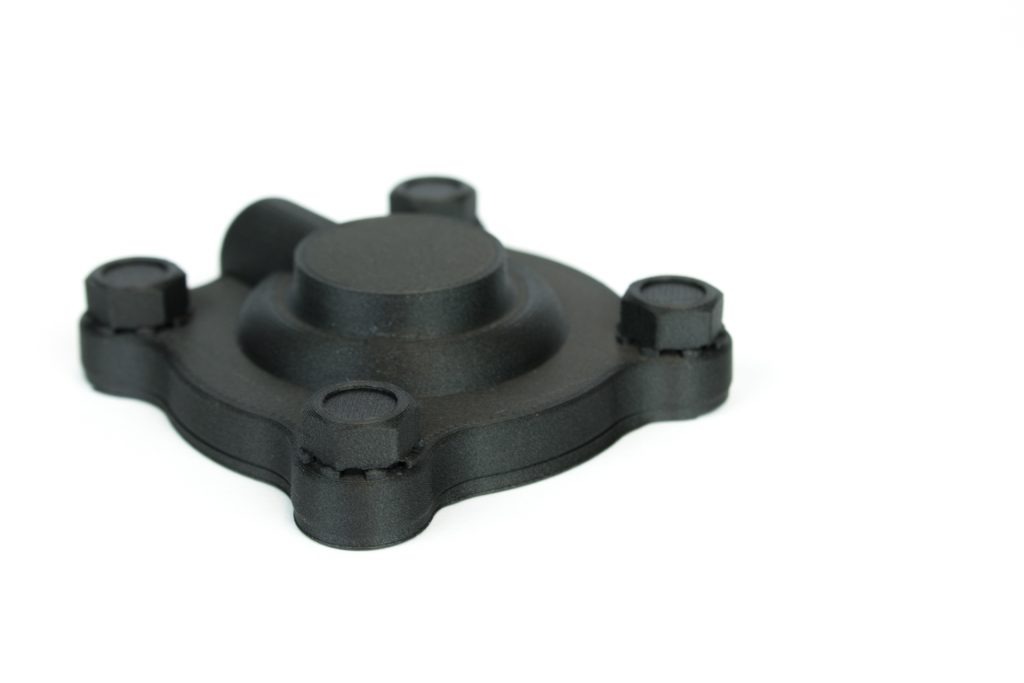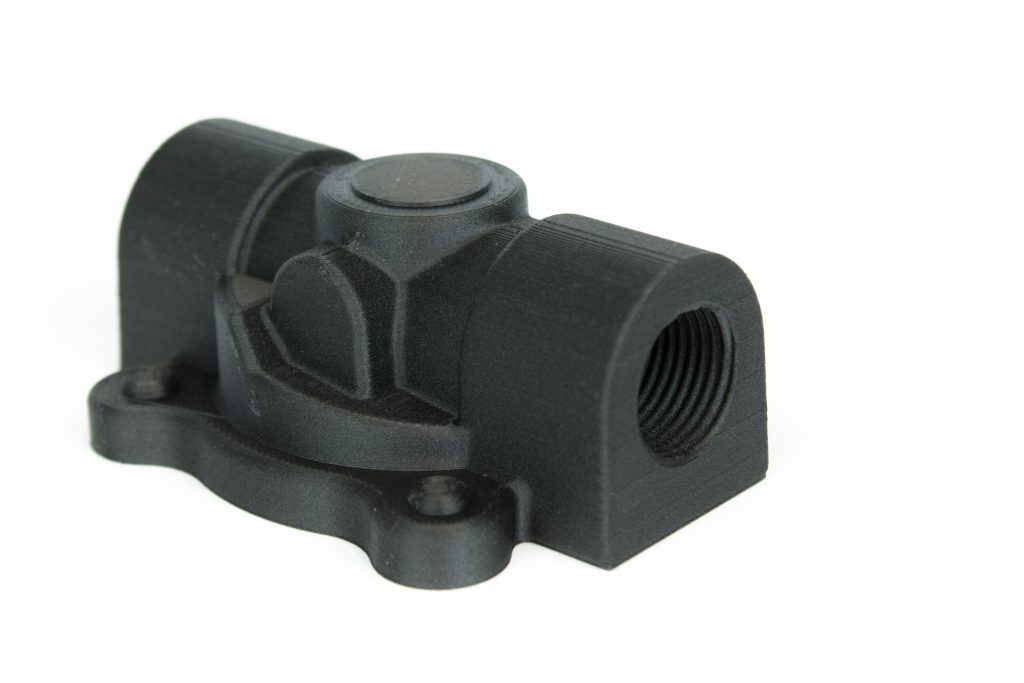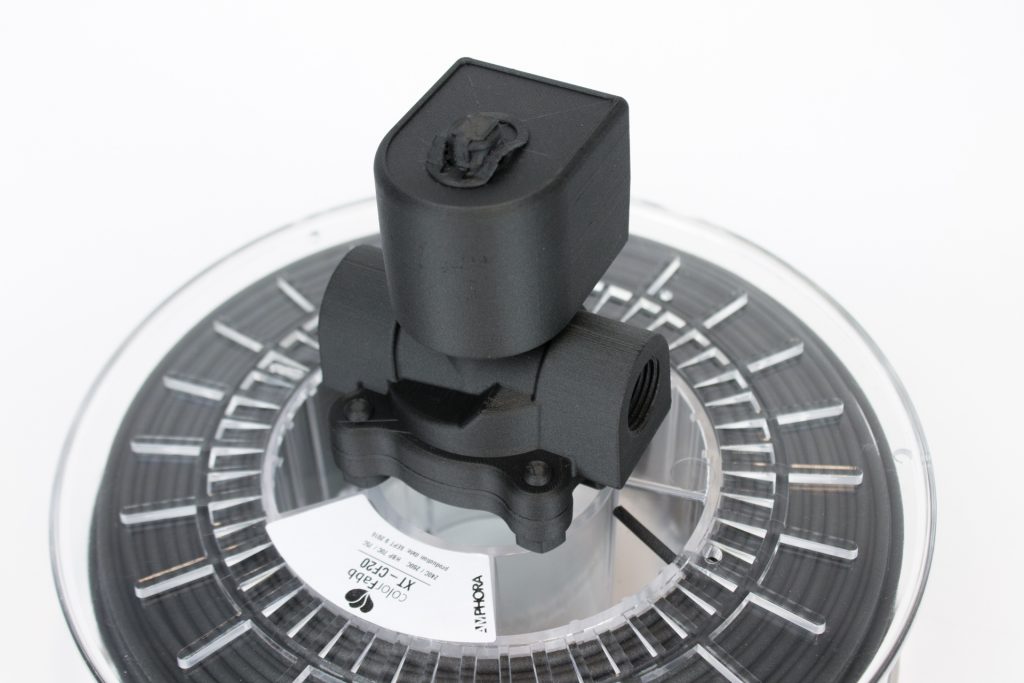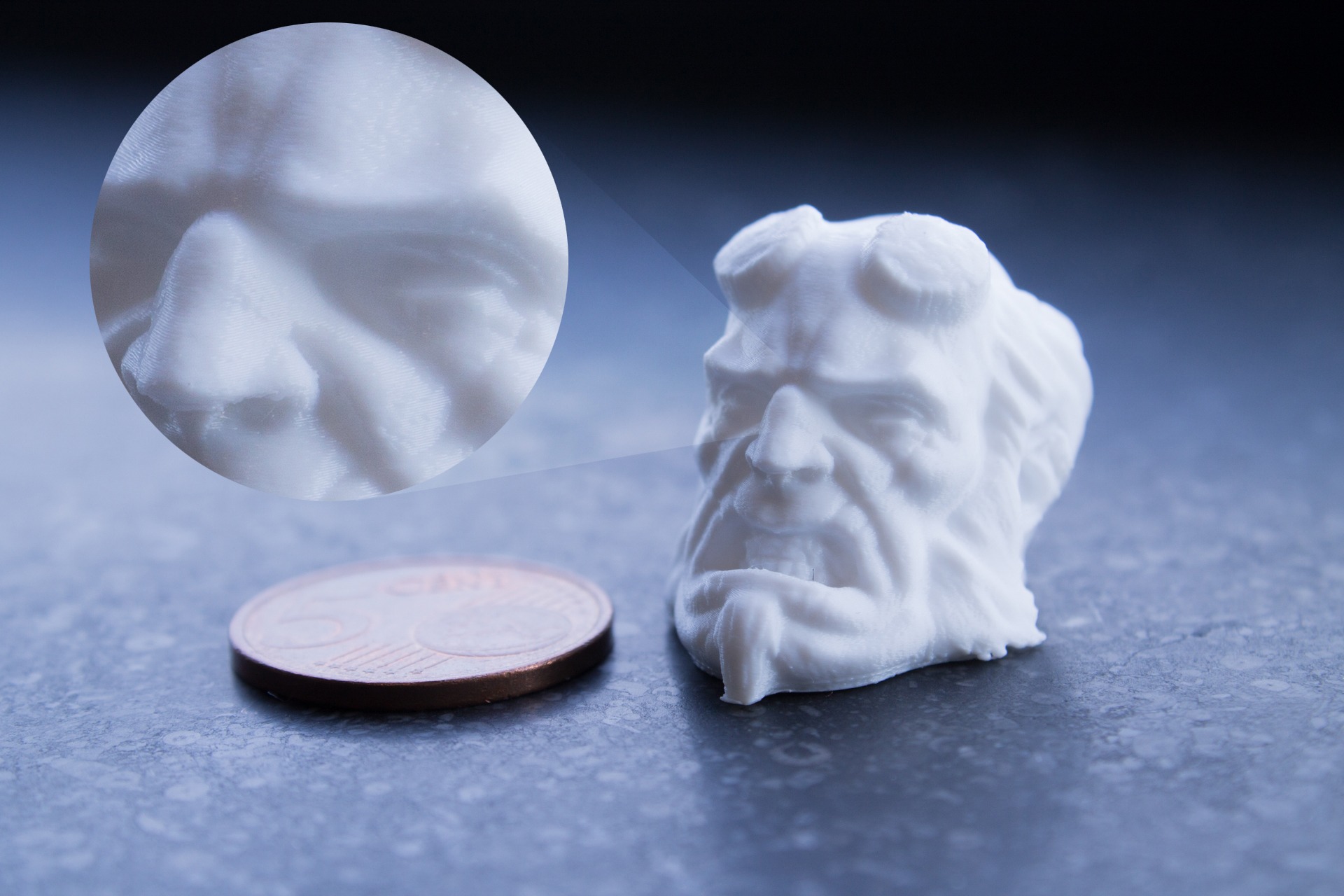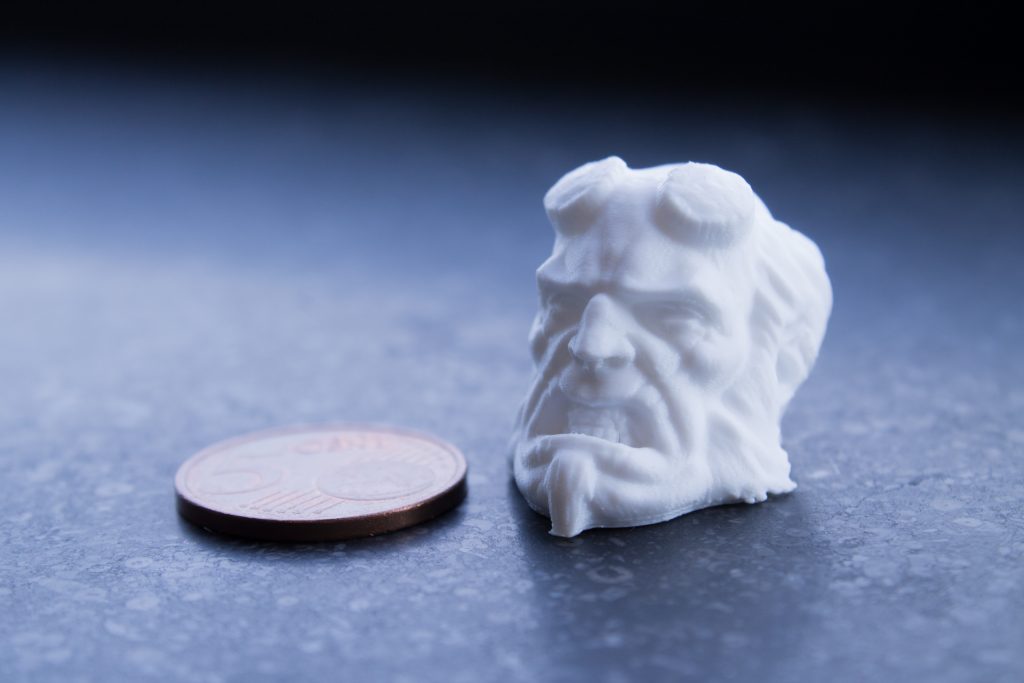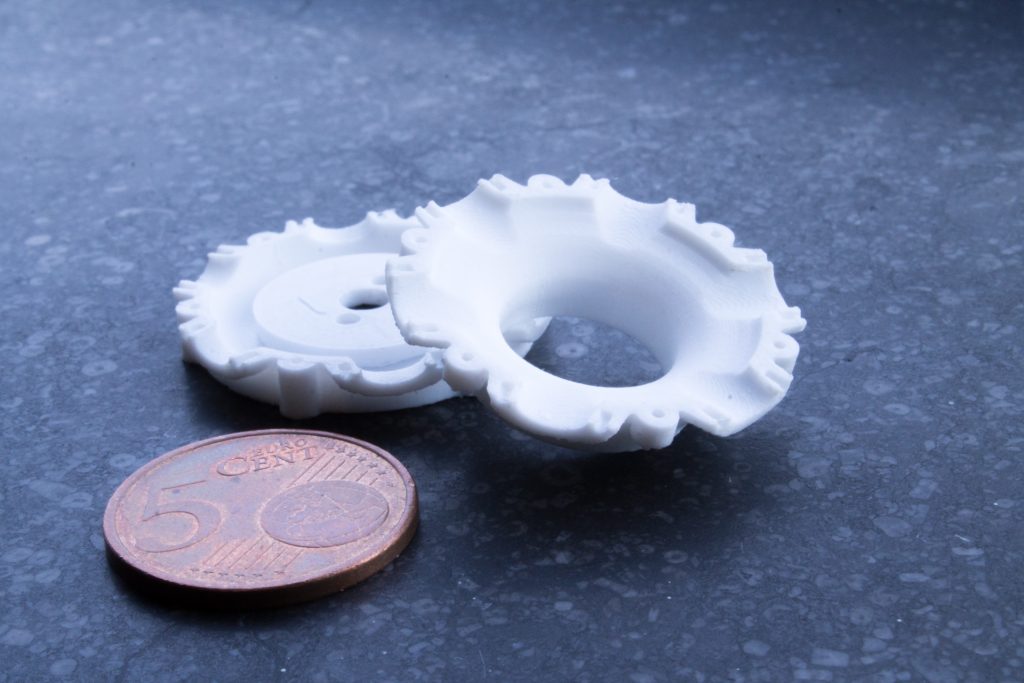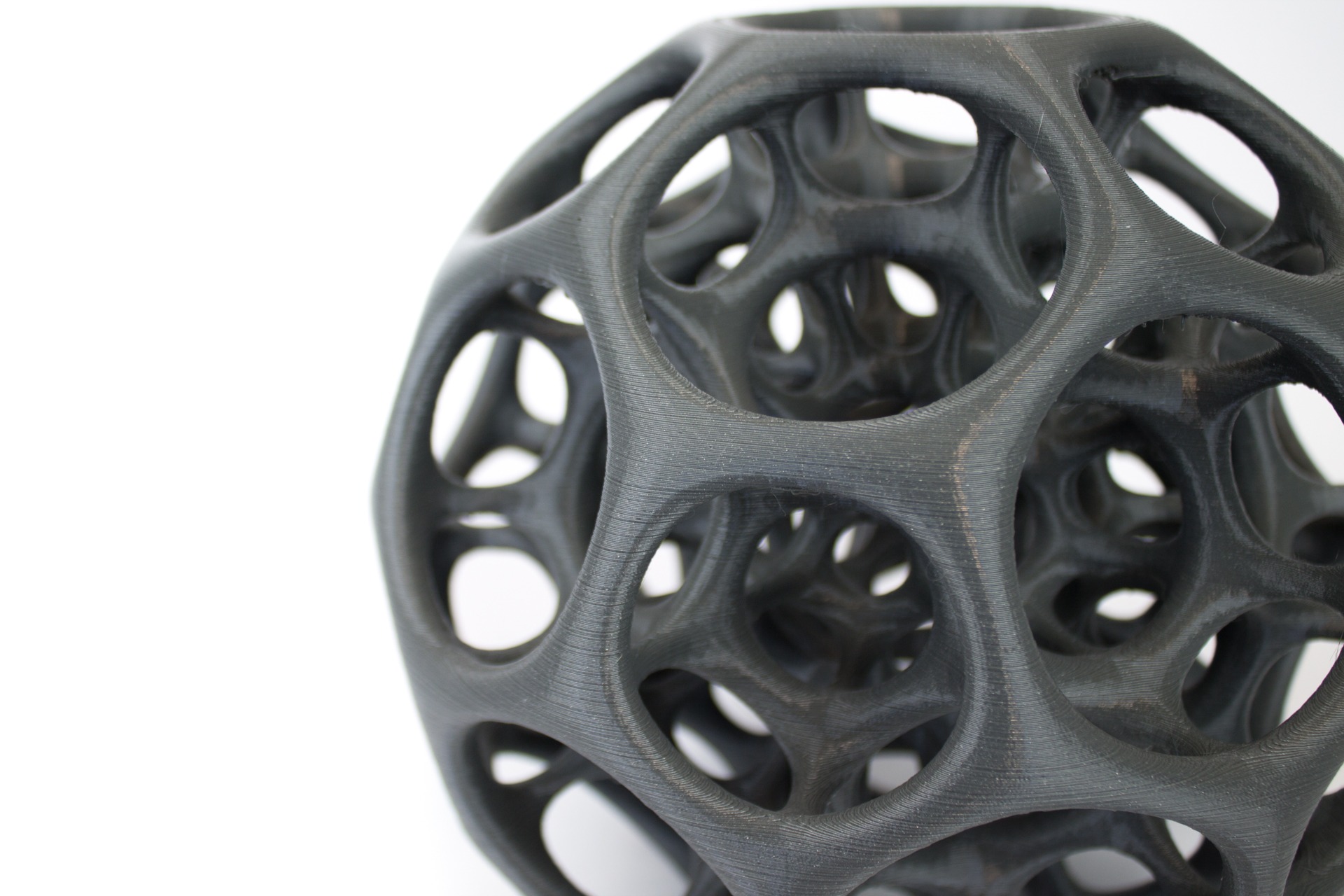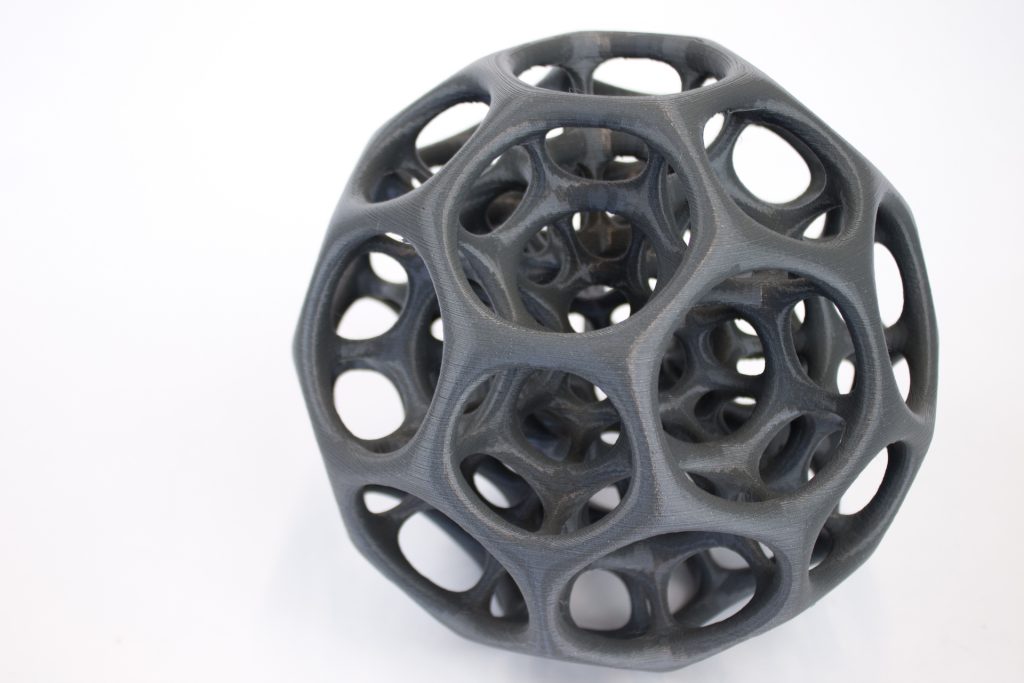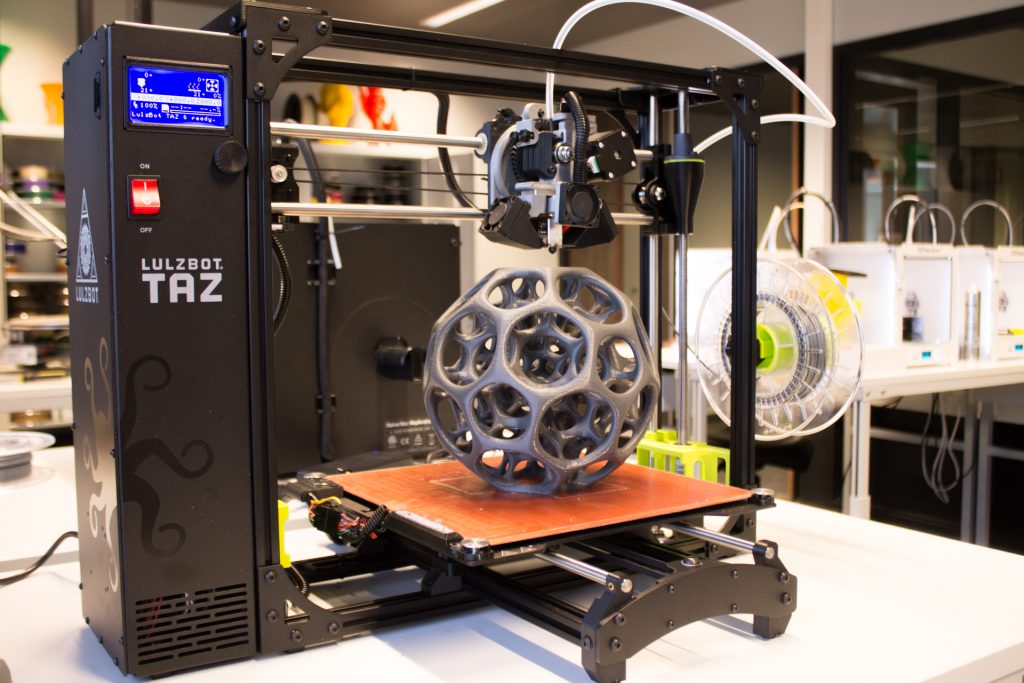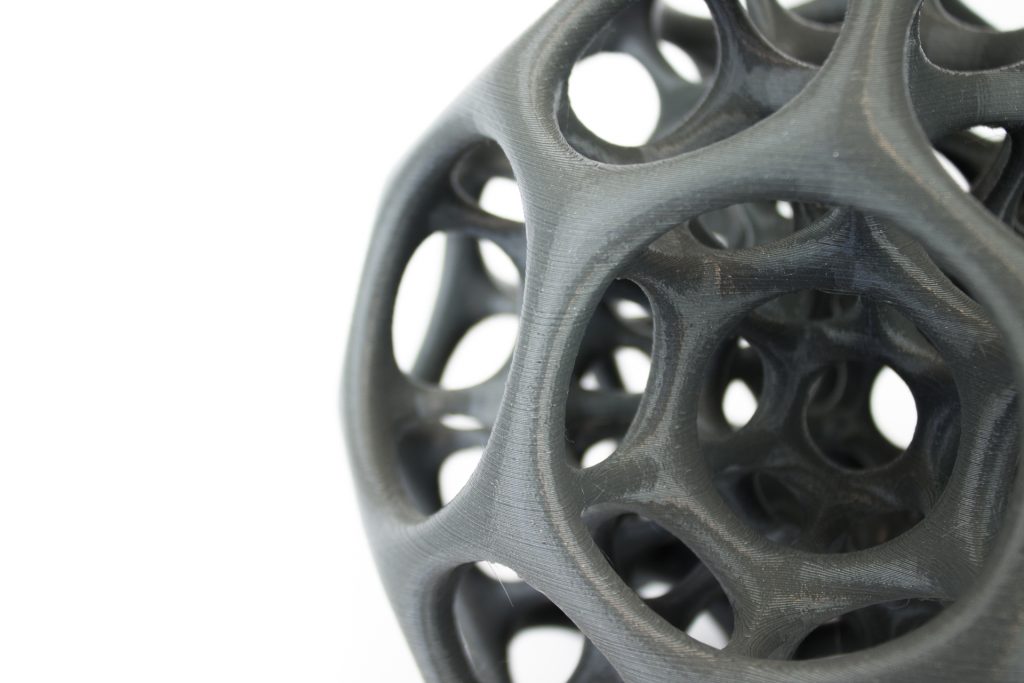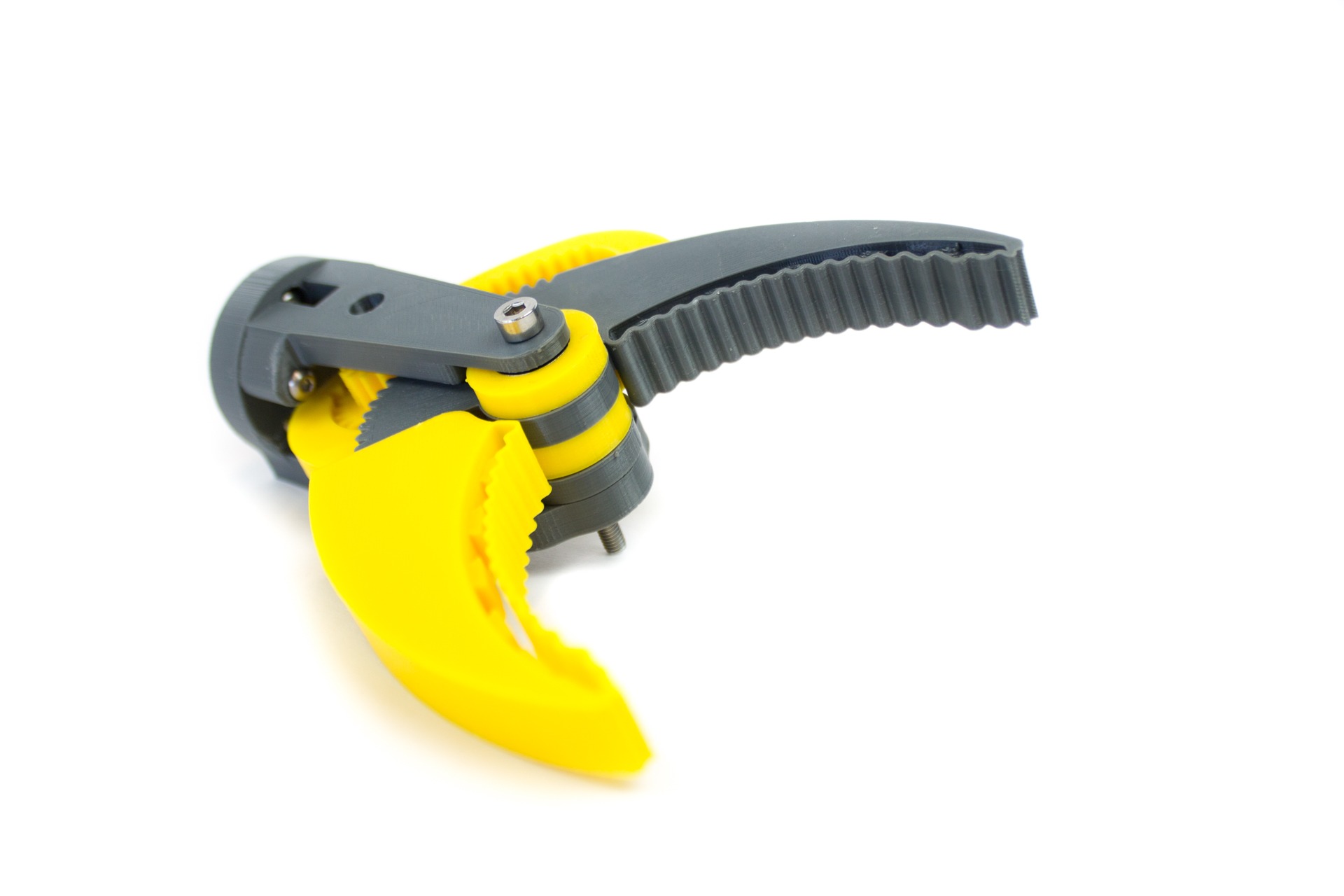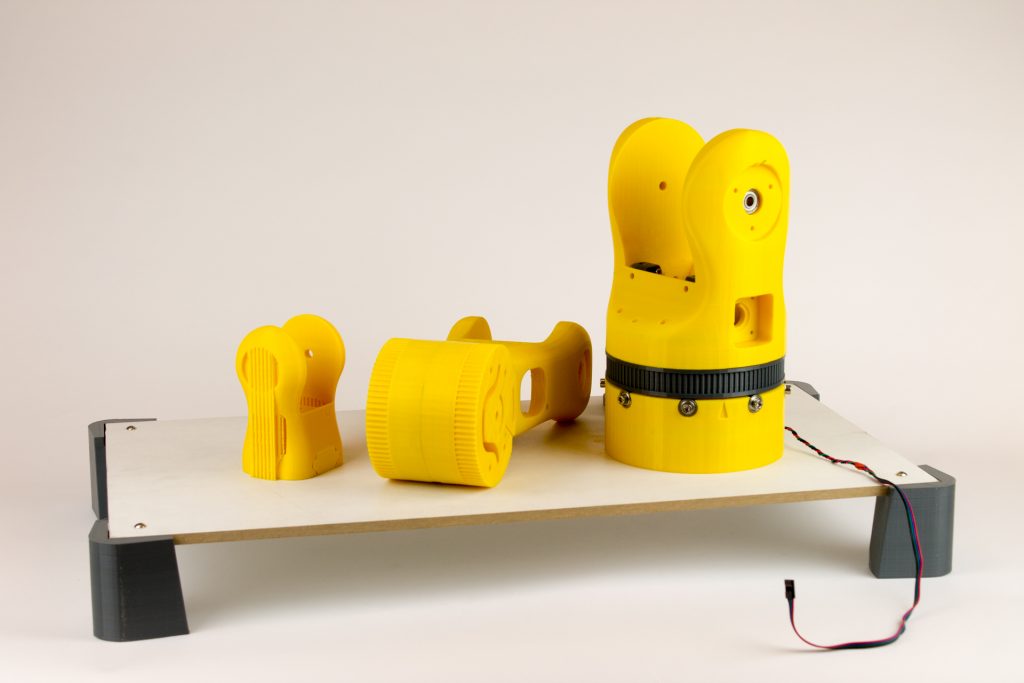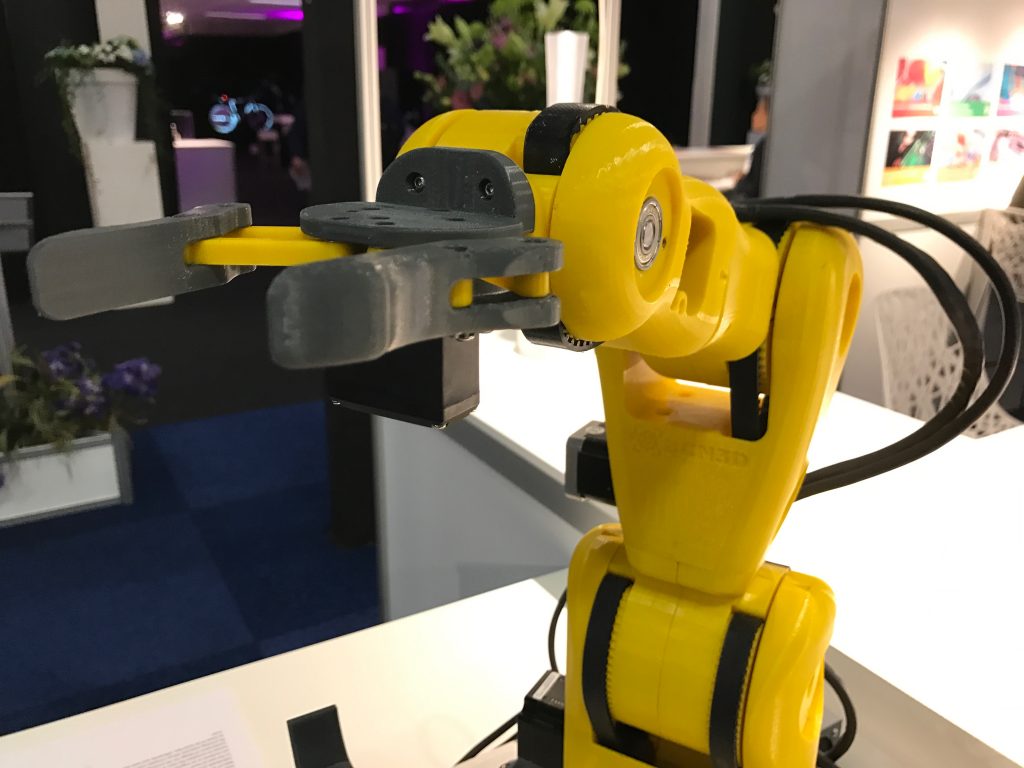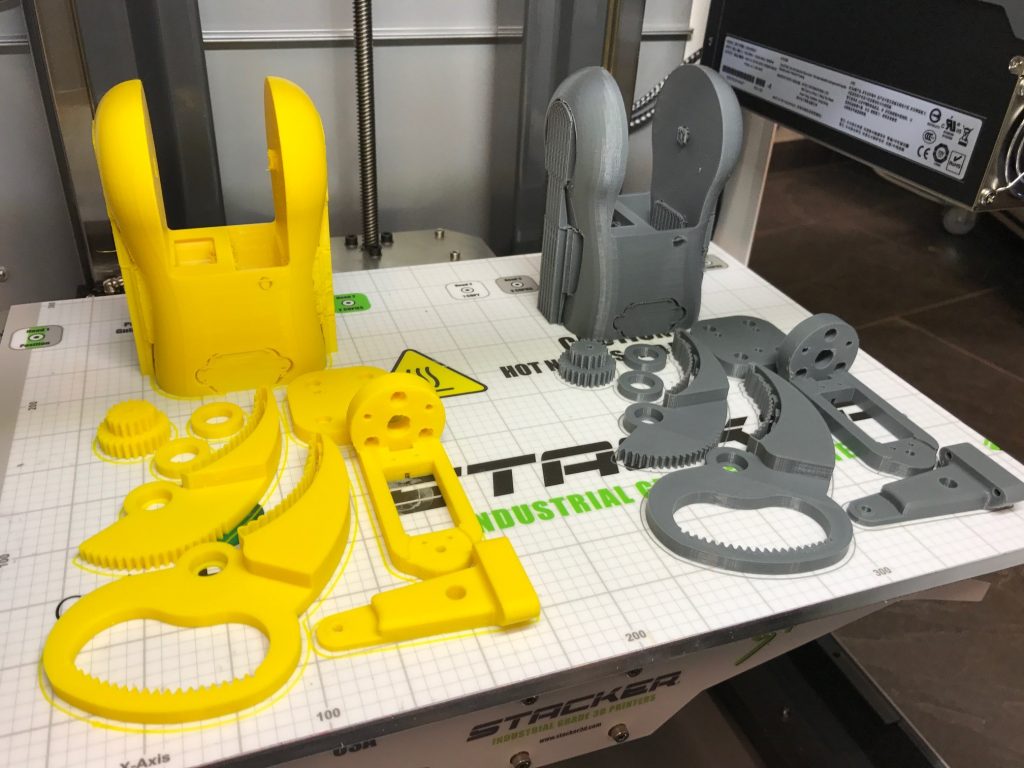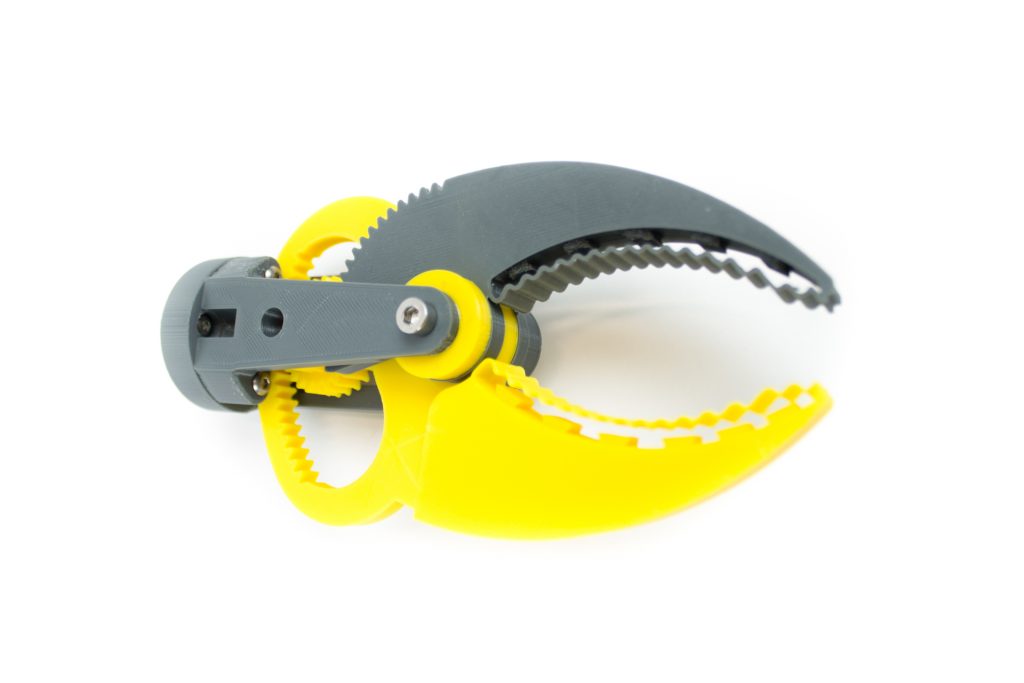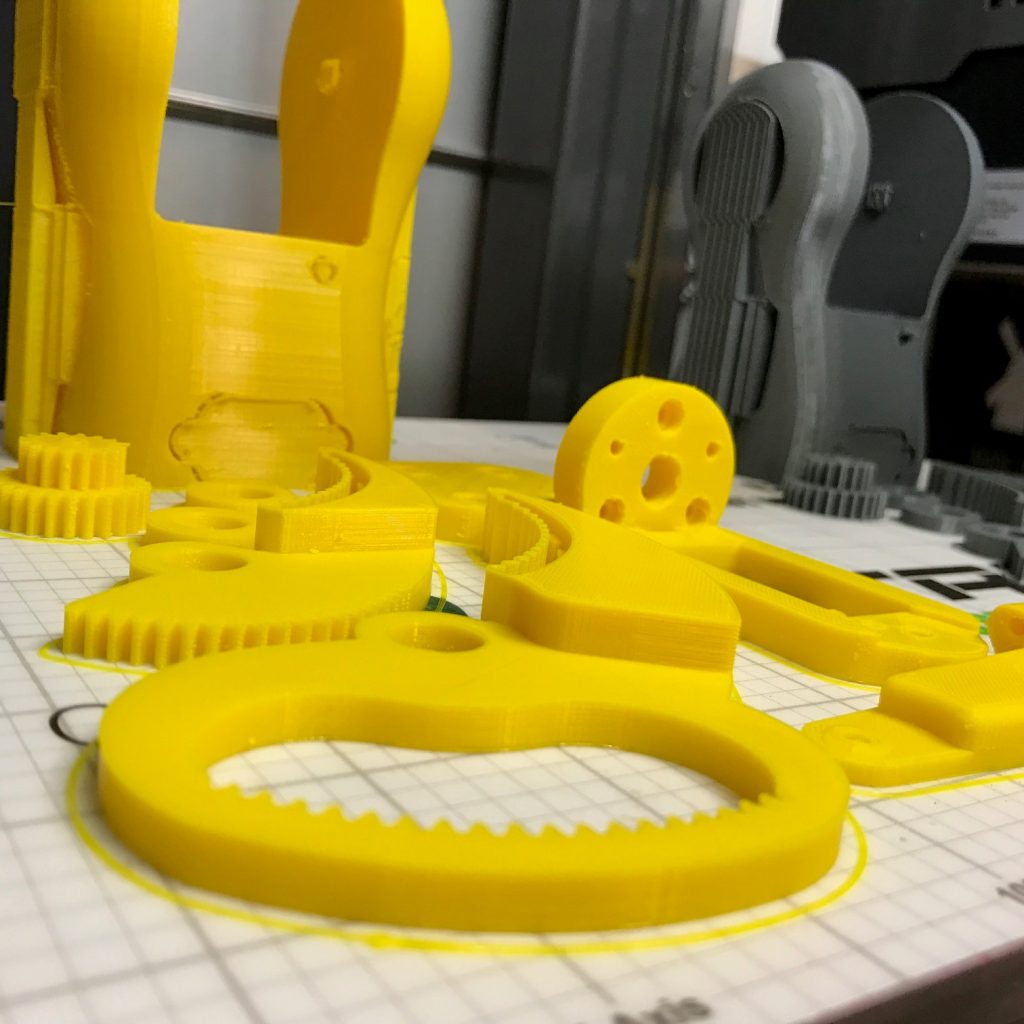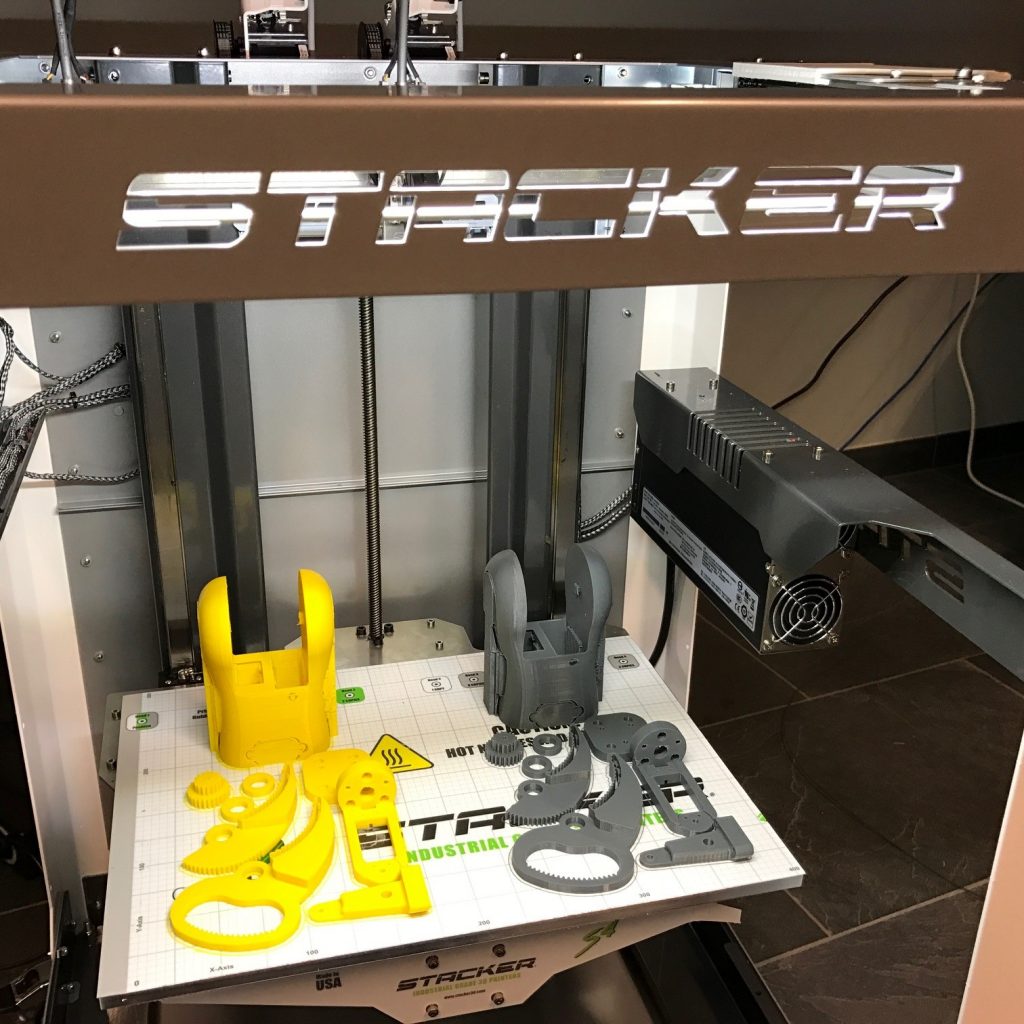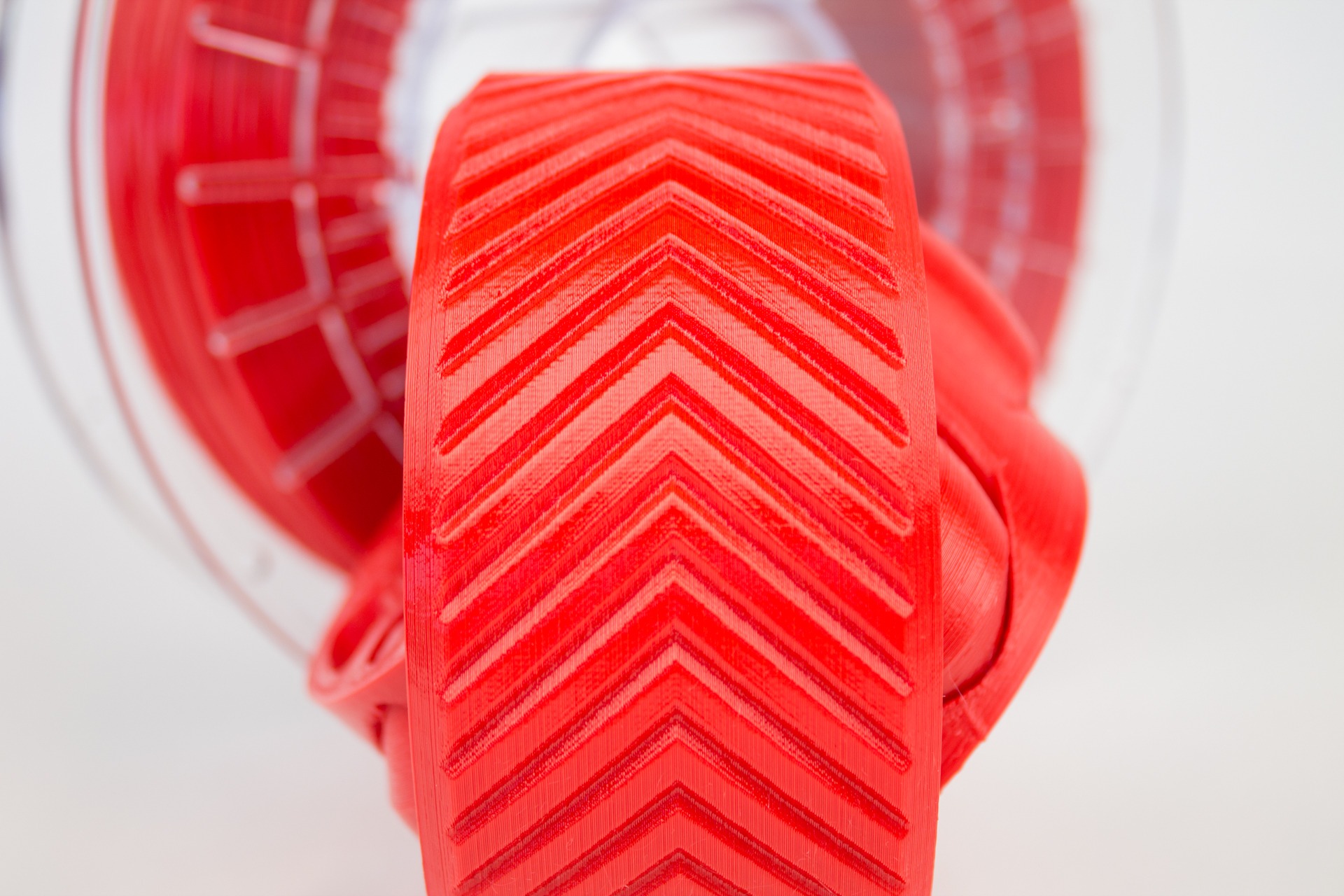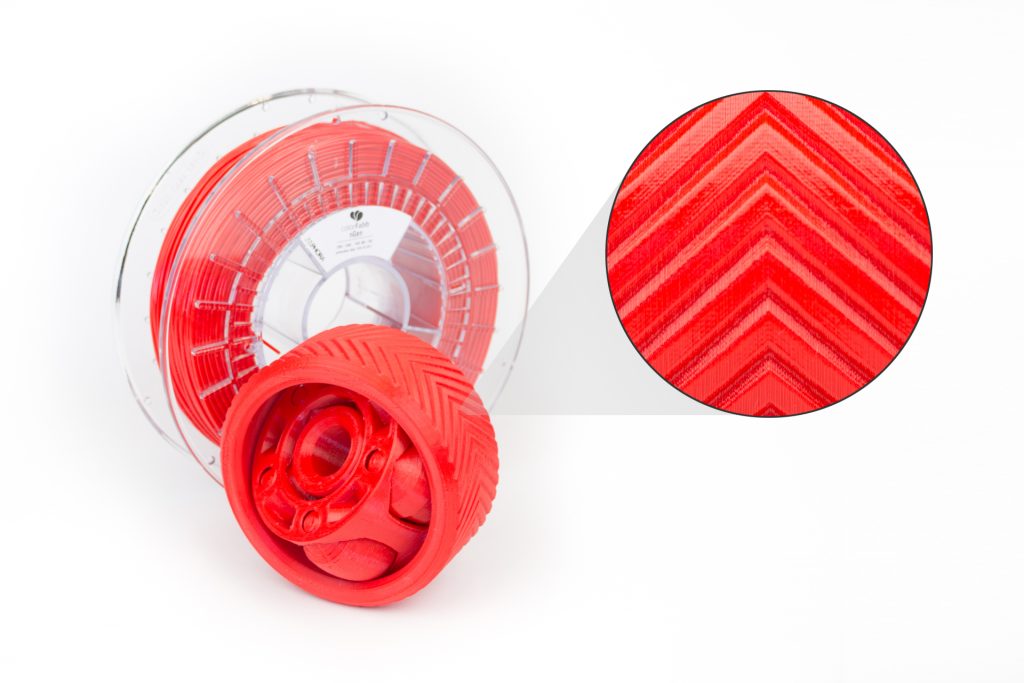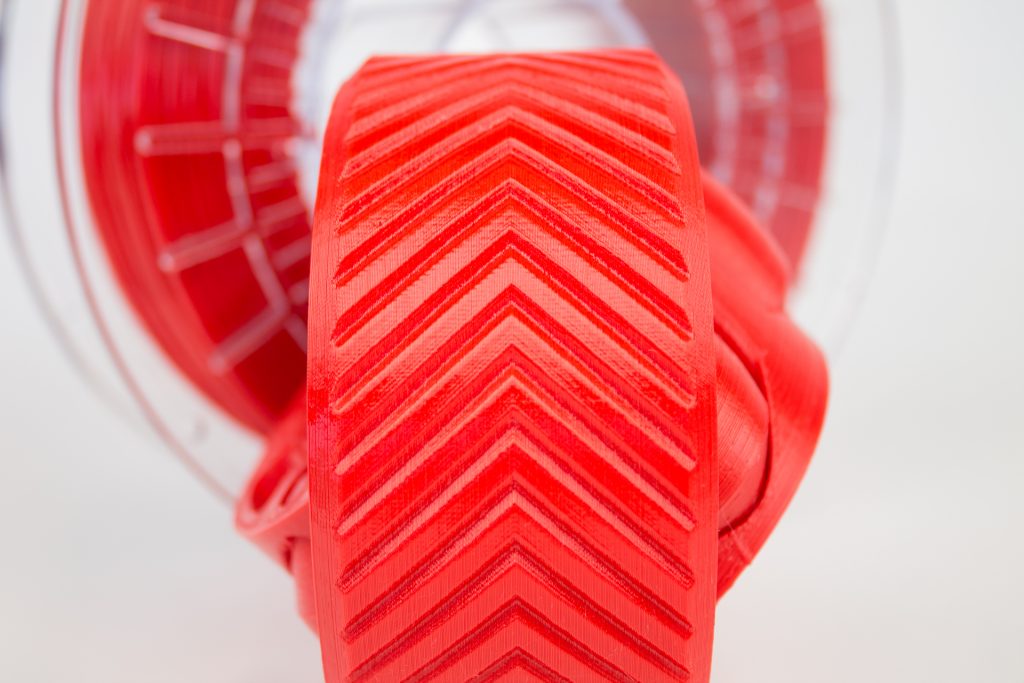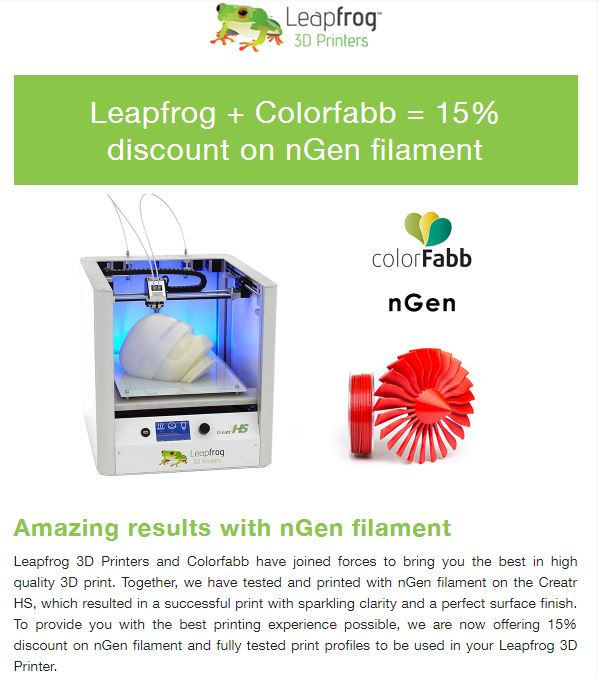3D printing allows for a lot of applications, DIY repairing being one of them. This weekend we wrote about replacing a part for a laundy dryer, which was printed with colorFabb_HT. Today we have another case, made with colorFabb_XT, which started in our very own print lab!
A couple of weeks ago the pedal of the garbage bin in our printing lab broke. One of the pins that is used as a rotation point broke off. So we decided to model and print it ourselves!
On top: the printed version, below the original broken version.
Printed with colorFabb_XT Dark Gray, this model has been designed in SolidWorks, during which the printing orientation has been kept in mind.
When you print parts for mechanical or functional use, the direction of the printed layers is important in order to maximize the mechanical properties of the print. It also incorporates the original foot pedal, which snaps on nicely. The part itself also fitted to our bin without any problems.
colorFabb_XT is a perfect material for functional prints like this, due to the excellent mechanical and printing properties of the material. The printed parts also show a high glossy finish which can also be used for visual aspects in functional prototypes.
Printed on the Lulzbot TAZ 6 with the standard nozzle on 0,2mm layerheight. Scroll down for more information on the Lulzbot TAZ 6.
colorFabb_XT is made with Eastman Amphora™ 3D polymer AM1800. Launched in September 2014, it is a fantastic functional engineering material. With colorFabb_XT we achieved to produce a filament that provides good strength and toughness, as well as certain FDA food contact compliances. It has found a wide audience amongst users looking for extra functionality. With a temperature resistance of 75+ degrees, this filament offers (aside from its high strength and very high toughness) odor neutral processing, a styrene free formulation, FDA food contact compliance and BPA (Bisphenol A ) free formulation.
colorFabb_XT is available in 14 colors (including clear) and we ship from stock. Order yours now!
Engineers, designers, educators, and makers agree: The LulzBot TAZ 6 is the most reliable, easiest-to-use desktop 3D printer ever, featuring innovative self-leveling and self-cleaning, and a modular tool head design for flexible and multi-material upgrades. With proven 3D printing technology and one of the largest print volumes in its class, the LulzBot TAZ 6 is ready to work.
3D printing is more reliable than ever with the integrated automatic bed leveling system, all metal LulzBot v2 Hot End, and heated PEI print surface. With the all metal hot end, you can take advantage of the cutting edge market for new materials. Perfect for both large and small objects, the heated PEI build surface keeps your 3D printed objects in place when hot and releases when cool. With Cura LulzBot Edition, you have hundreds of quickprint profiles built in for seamless 3D printing.
The Lulzbot TAZ 6 is now available in our webshop at € 3.025 including VAT / € 2.500 excluding VAT.
Not sold yet? The TAZ 6 was recently reviewed by Richard Horne (RichRap) and Joel Telling (3DPrintingNerd). See their videos below:
You can find Richard’s full blog here.
And of course Joel Telling‘s review:
Richard and Joel have convinced you, we’re sure, but we’ll throw in a bit more:
- free shipping in Europe
- 4 (four!) free spools of our nGen filament!
